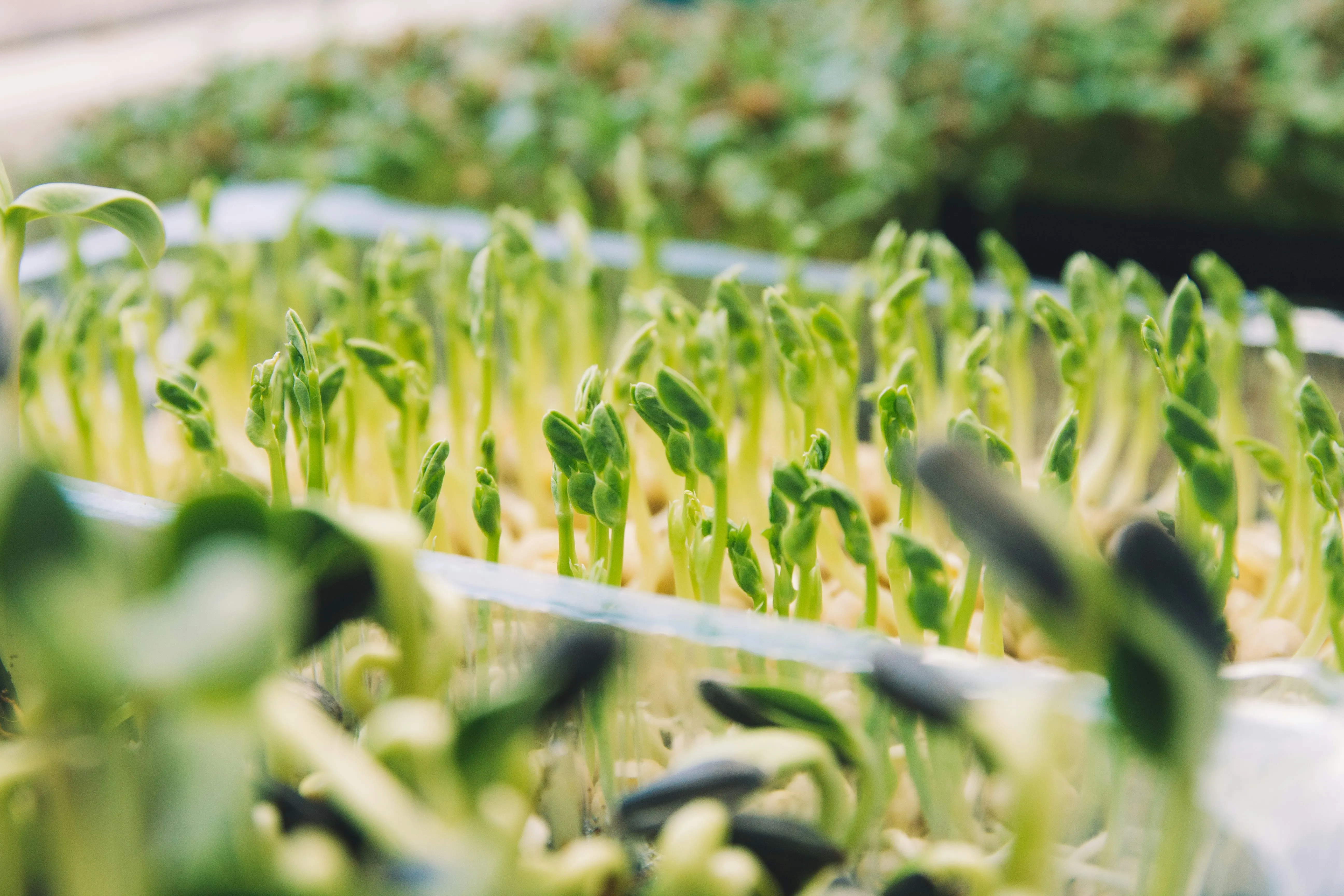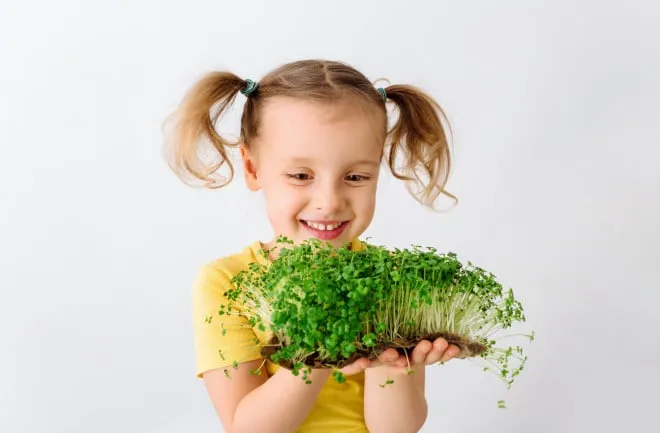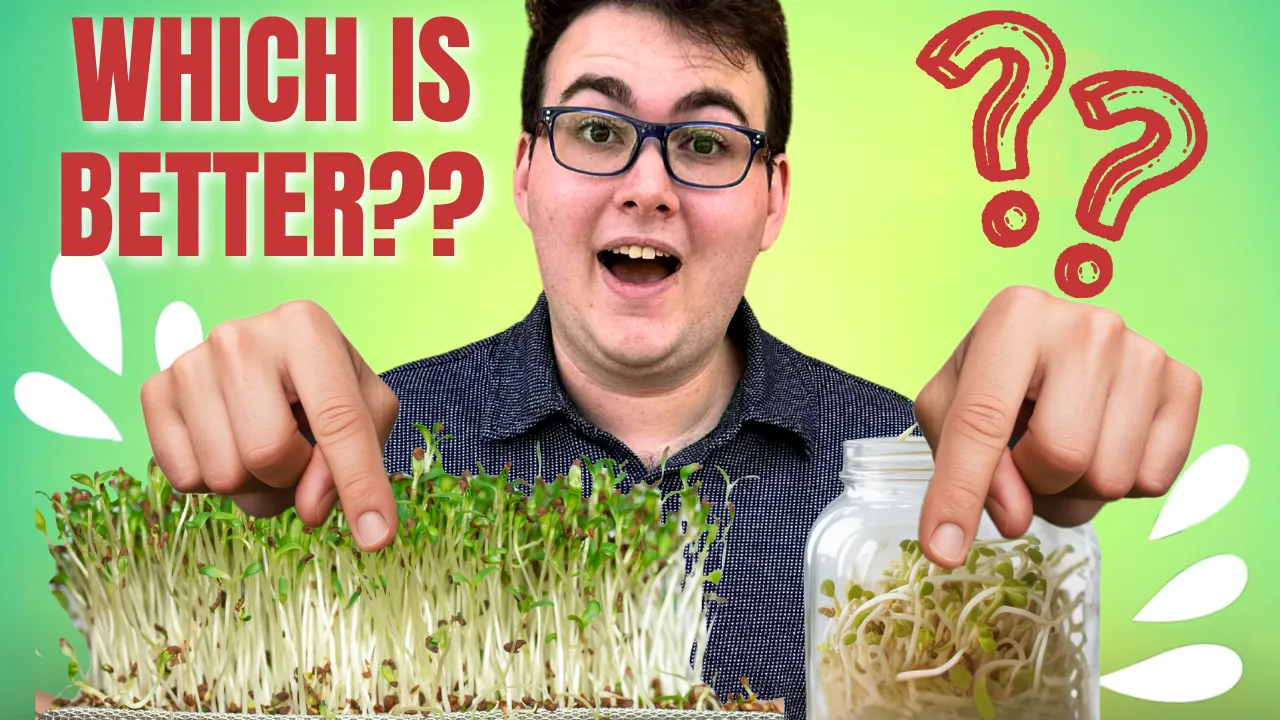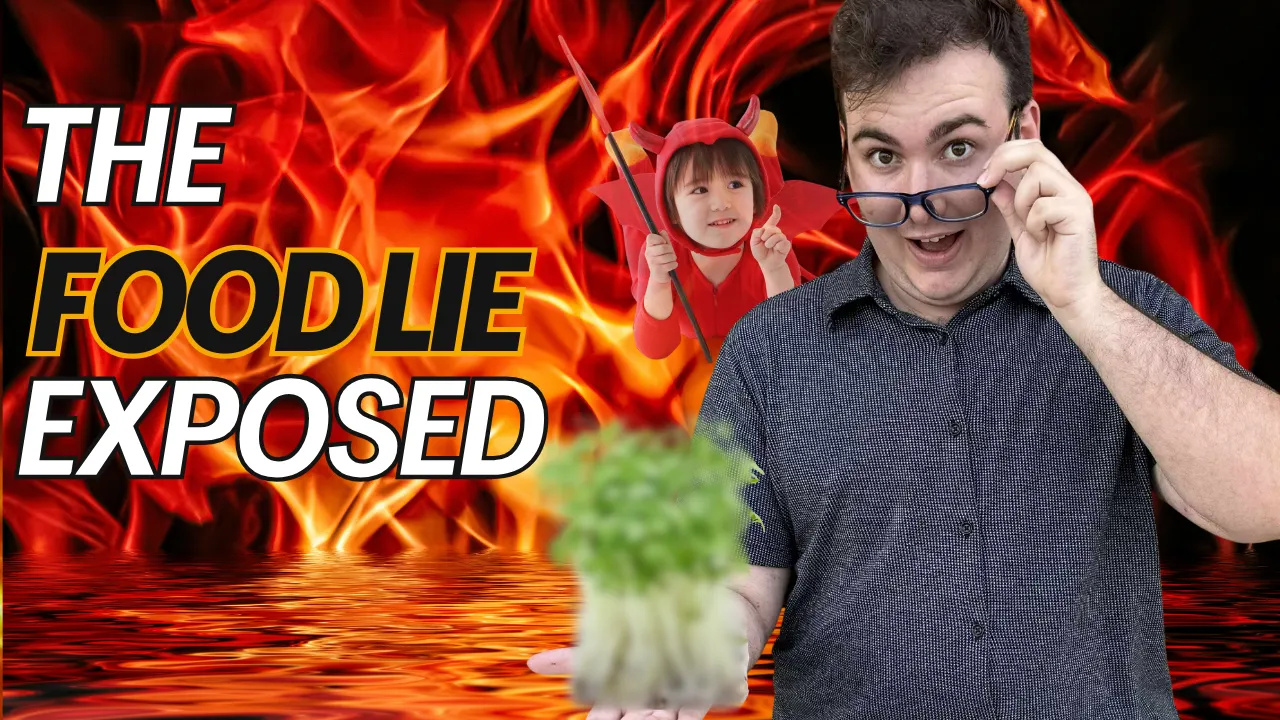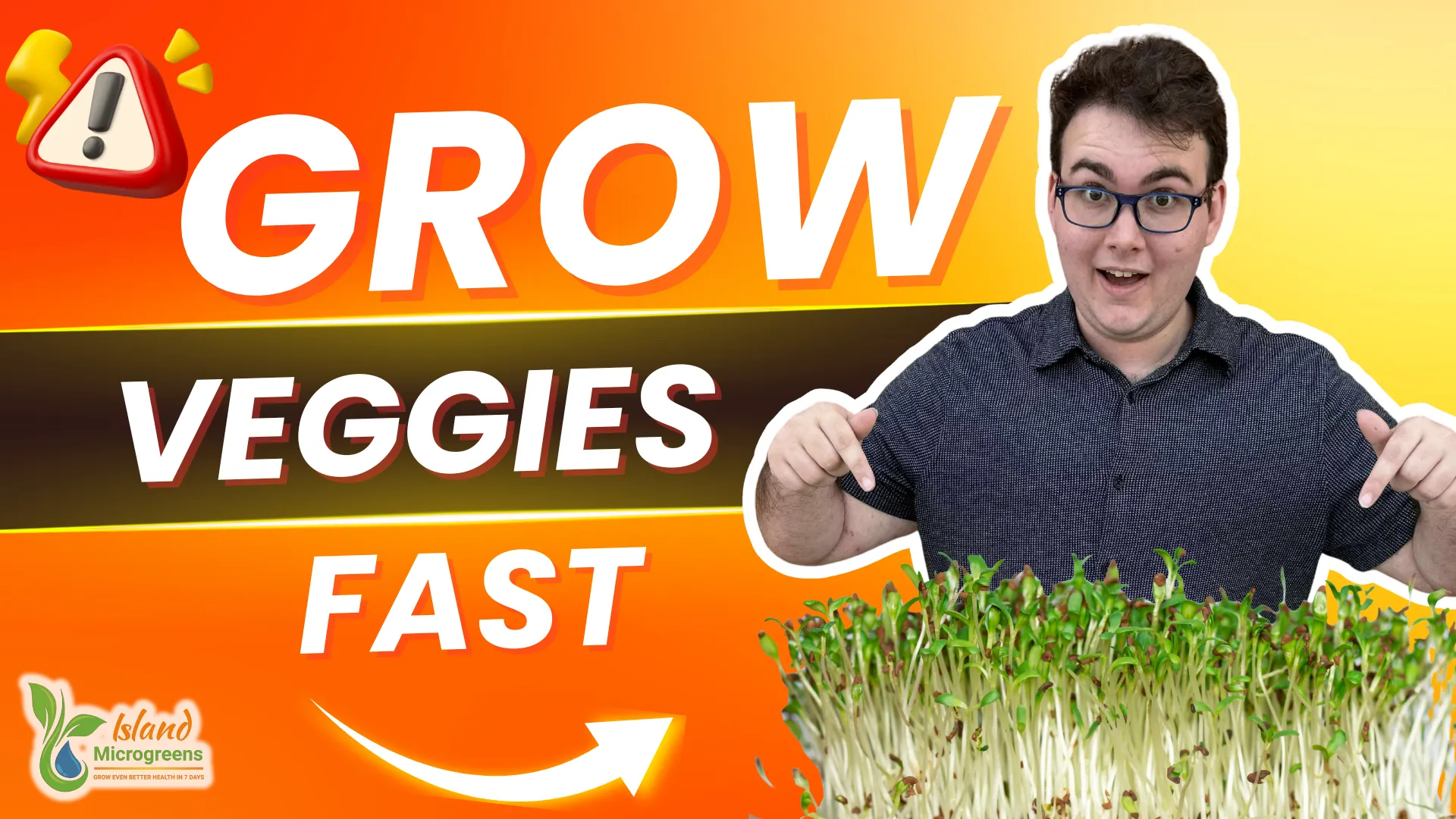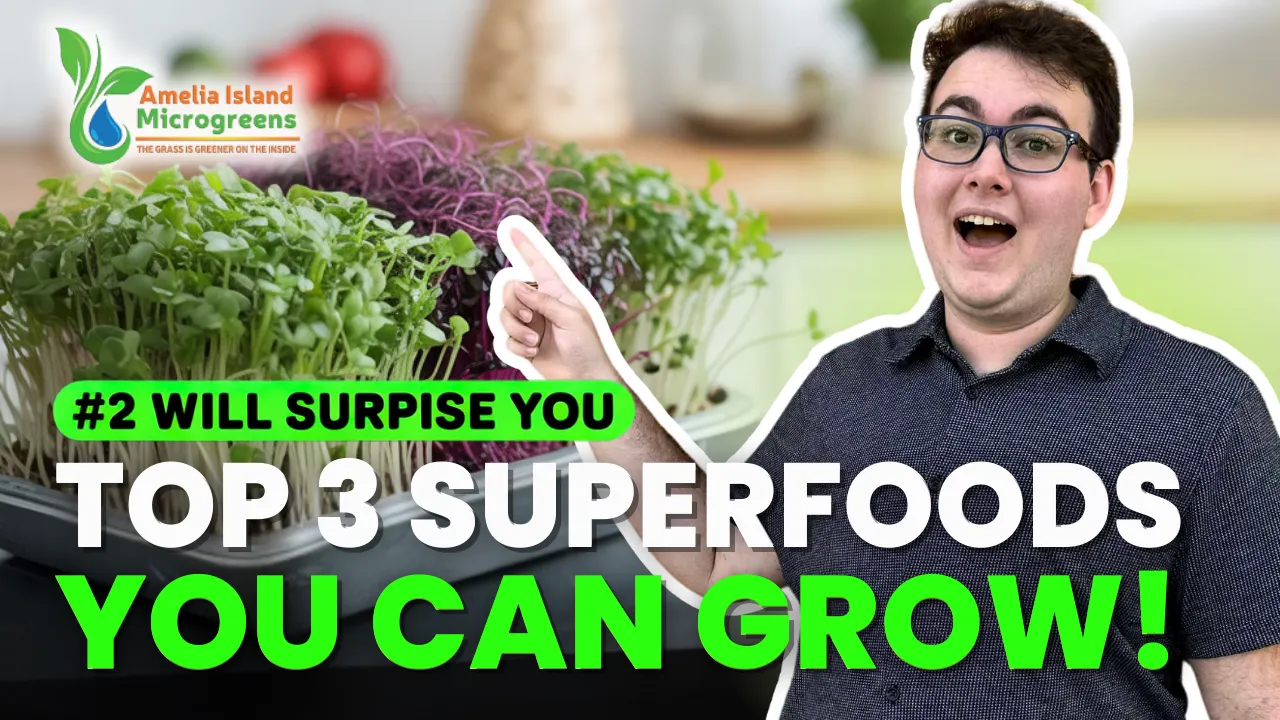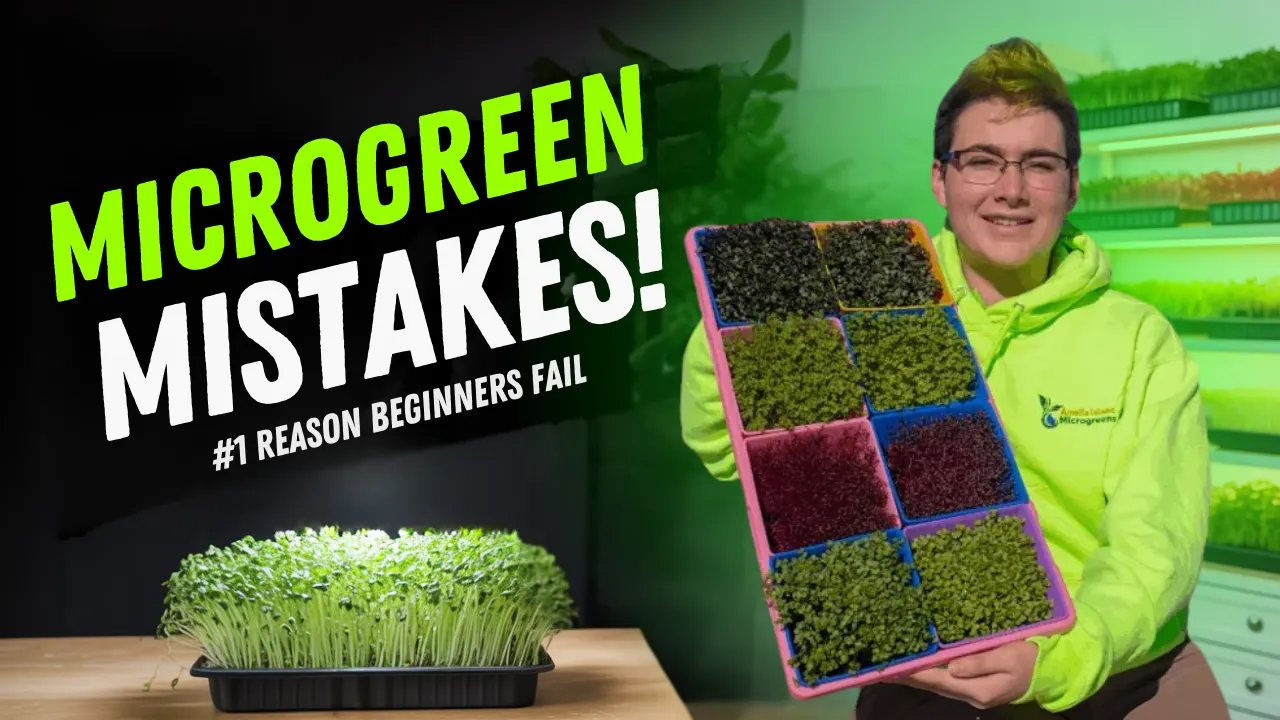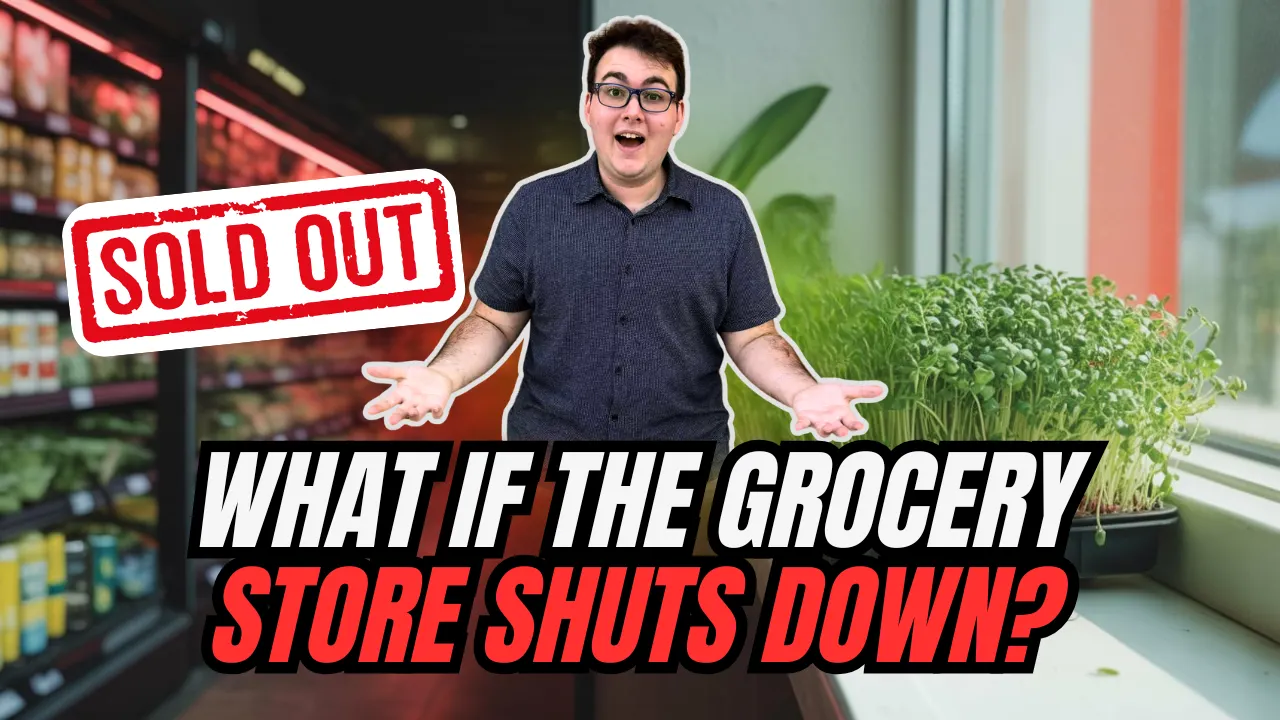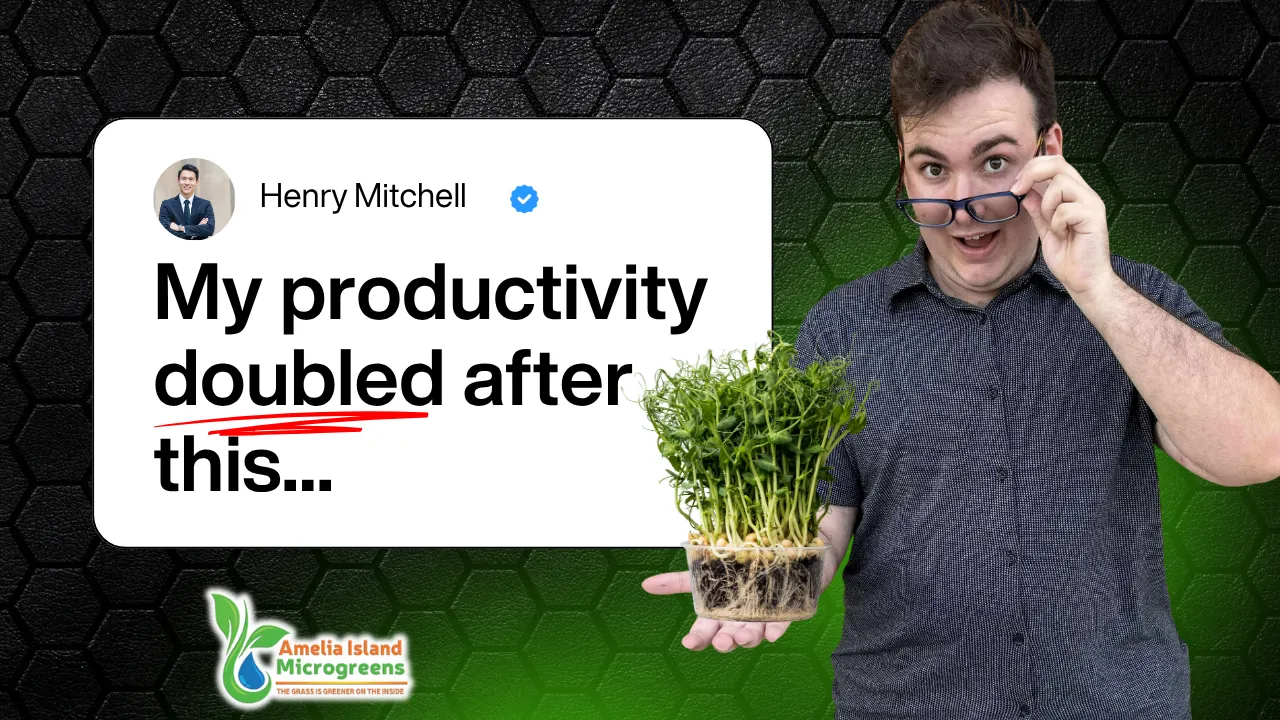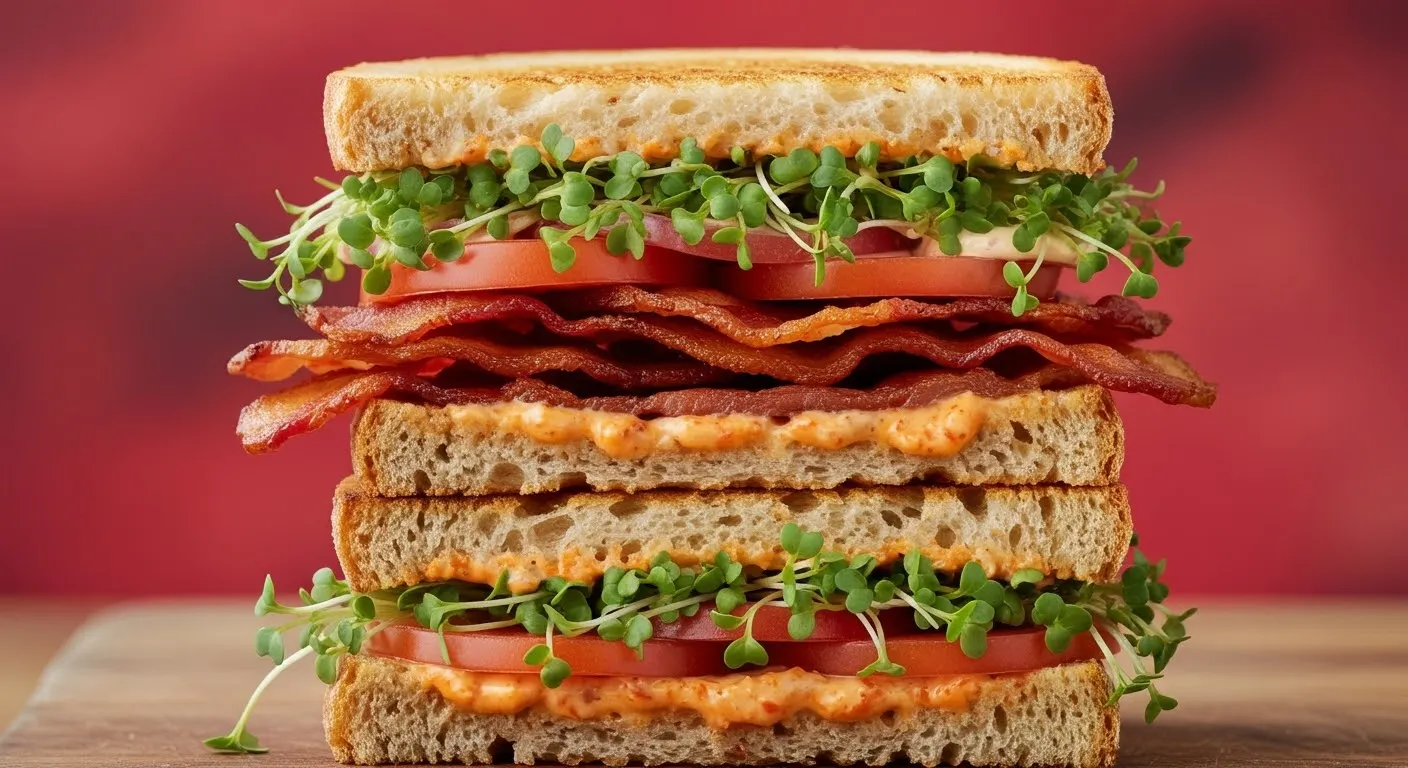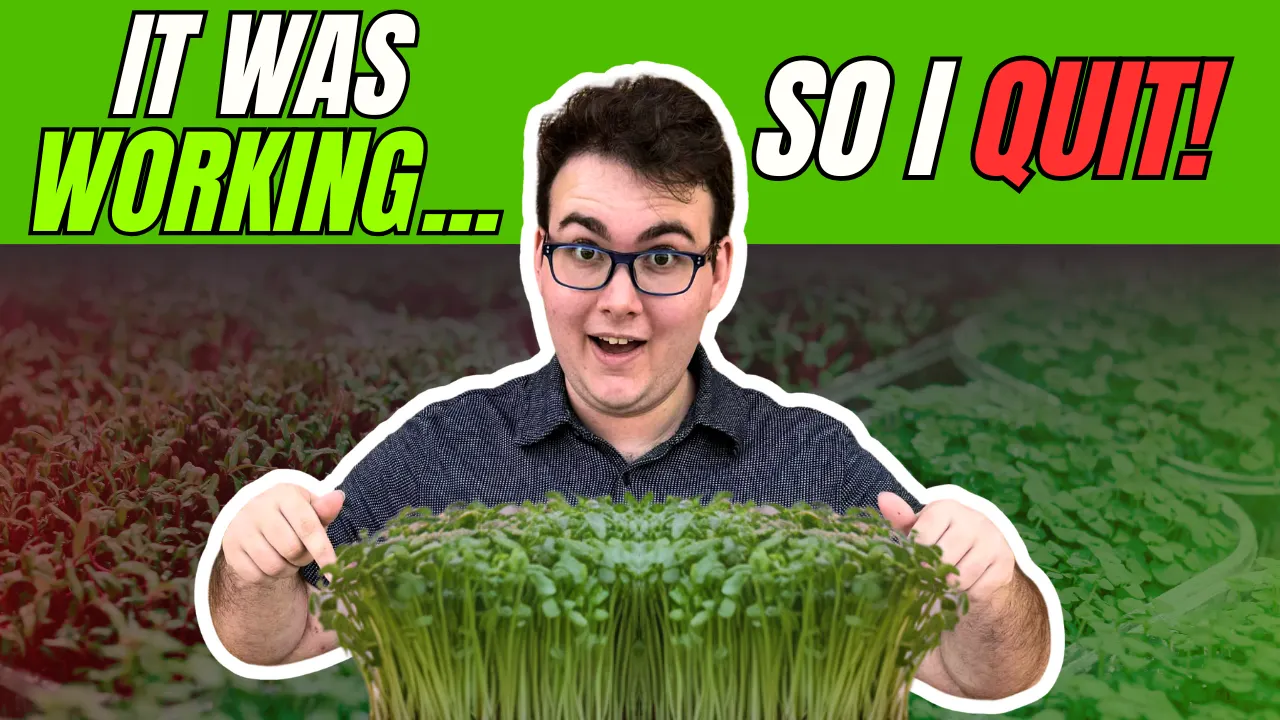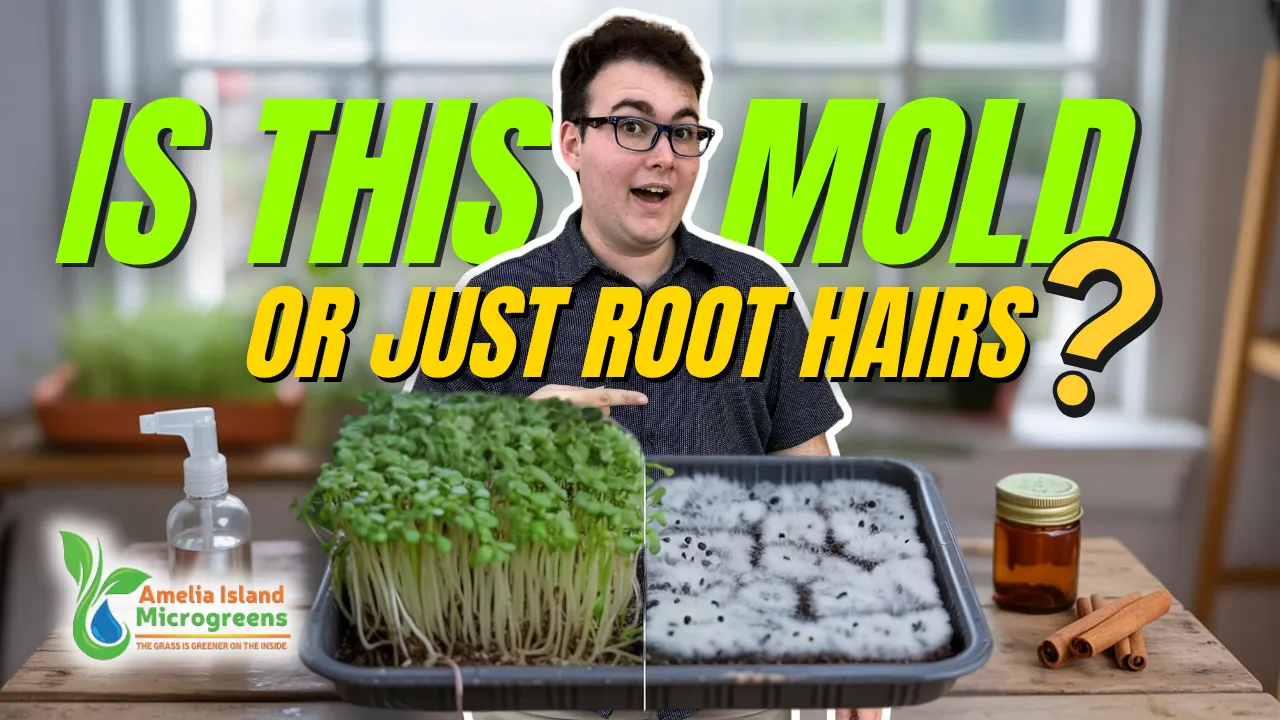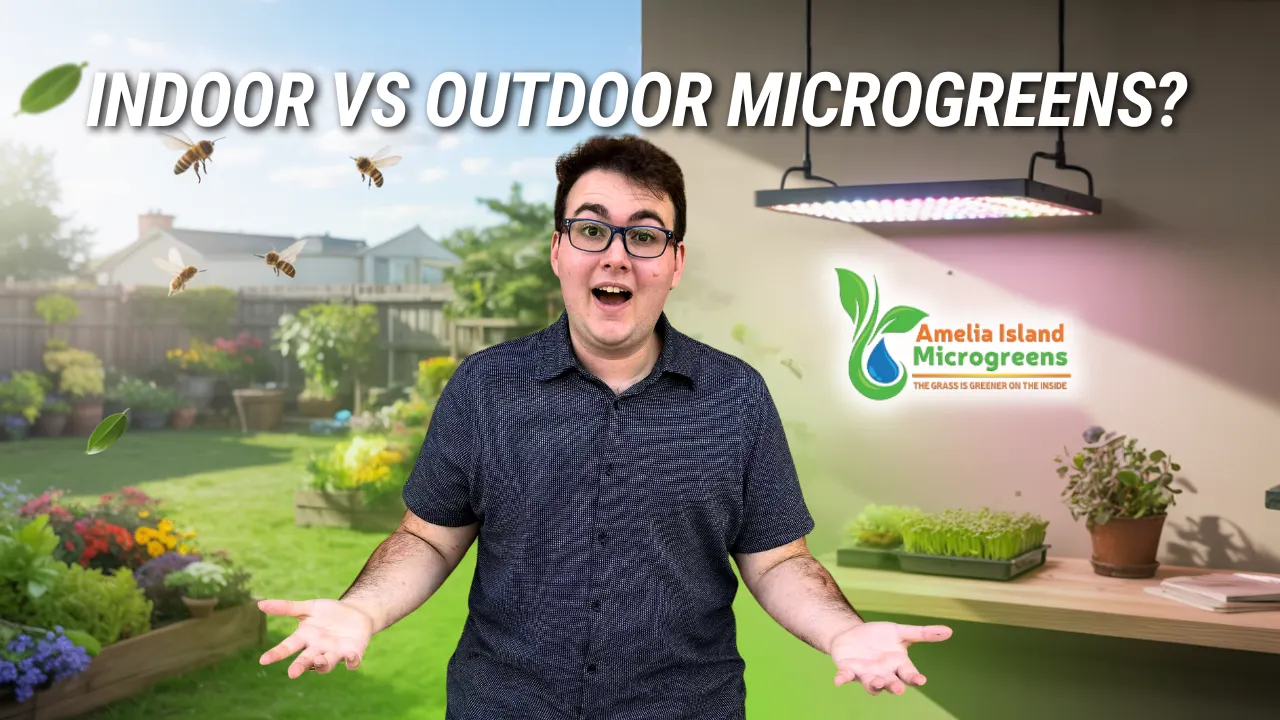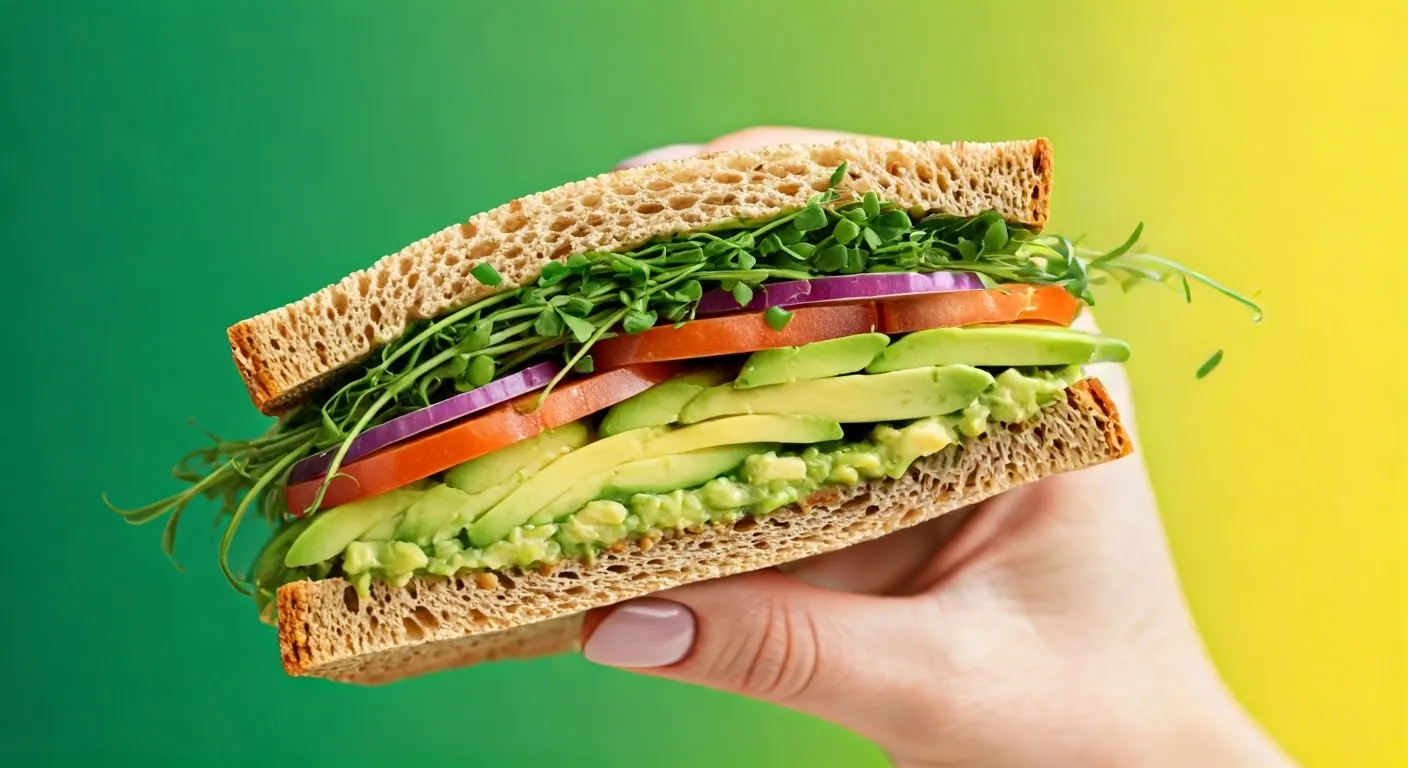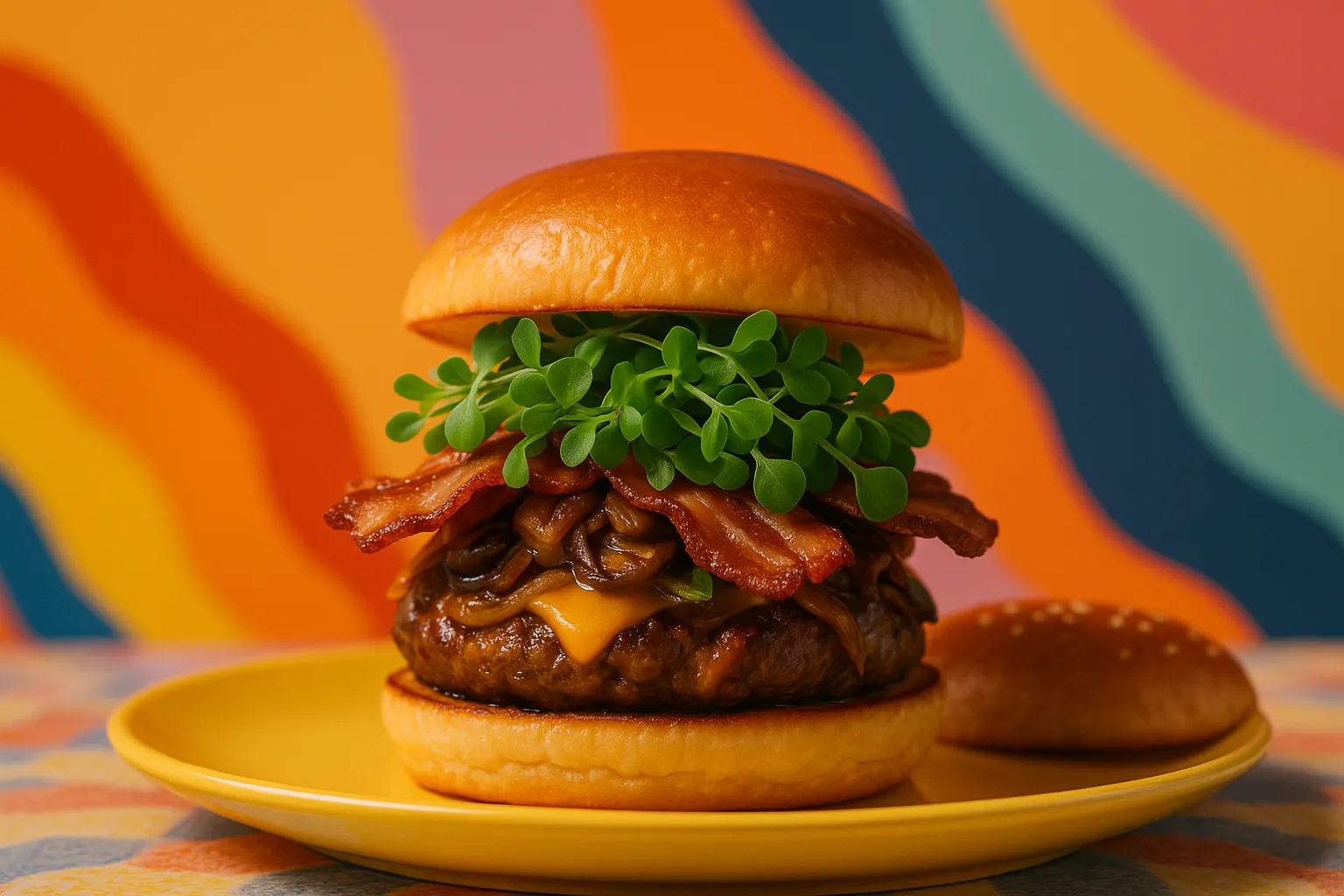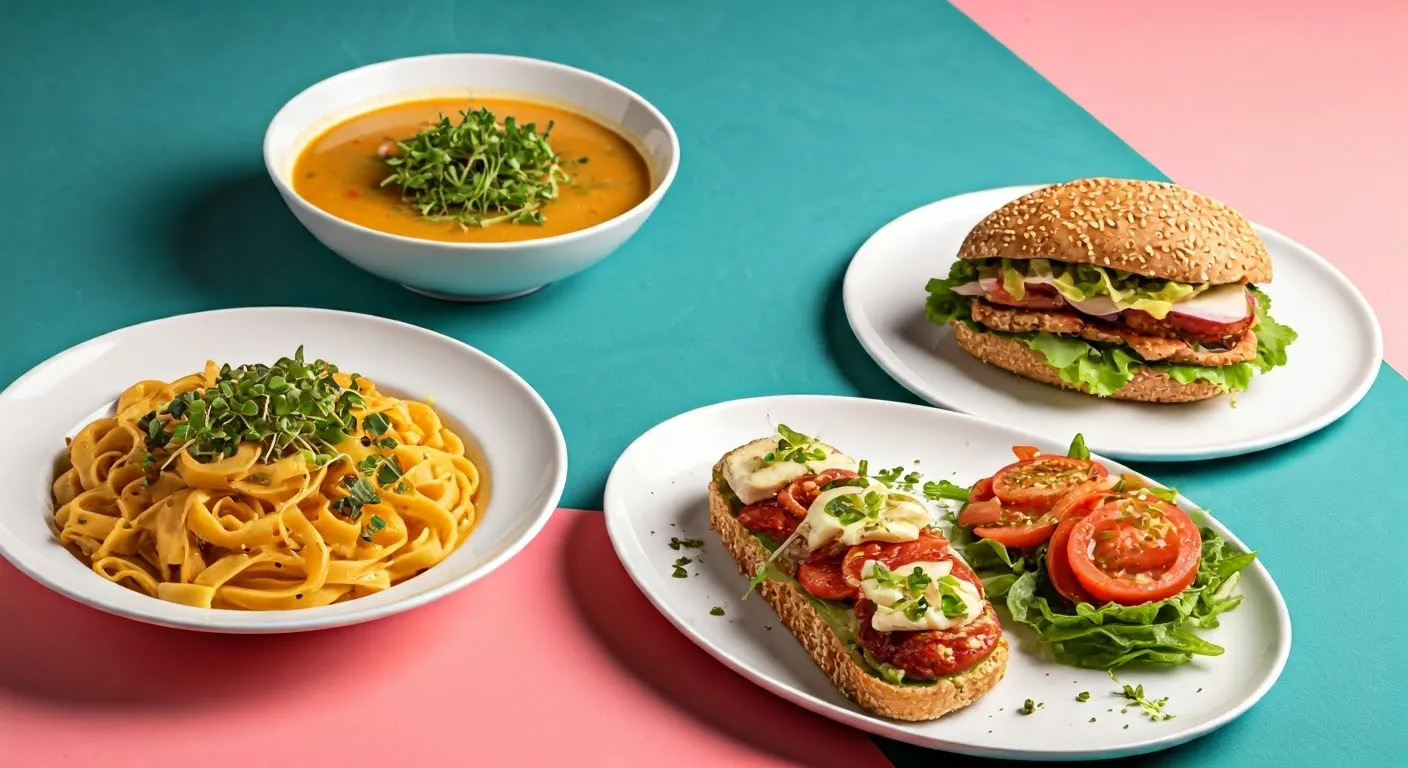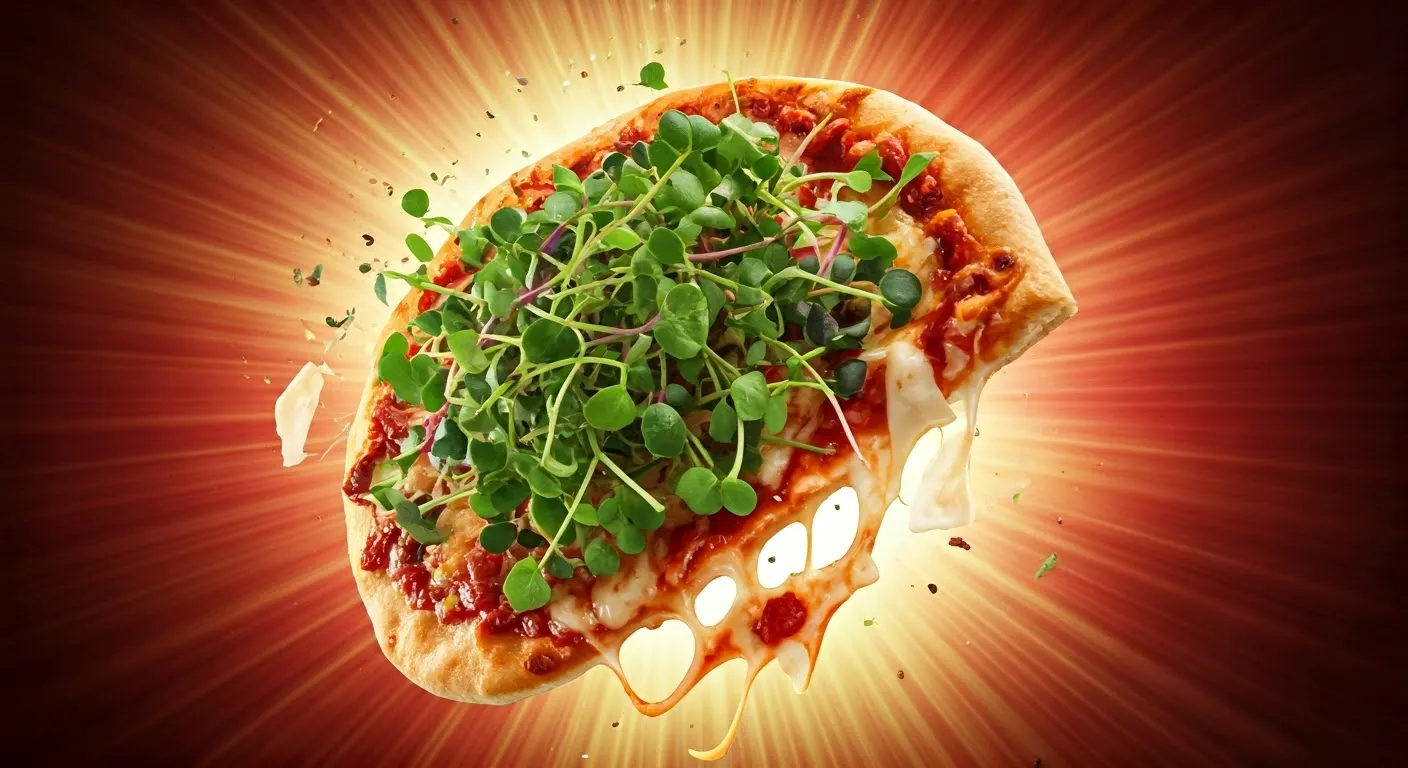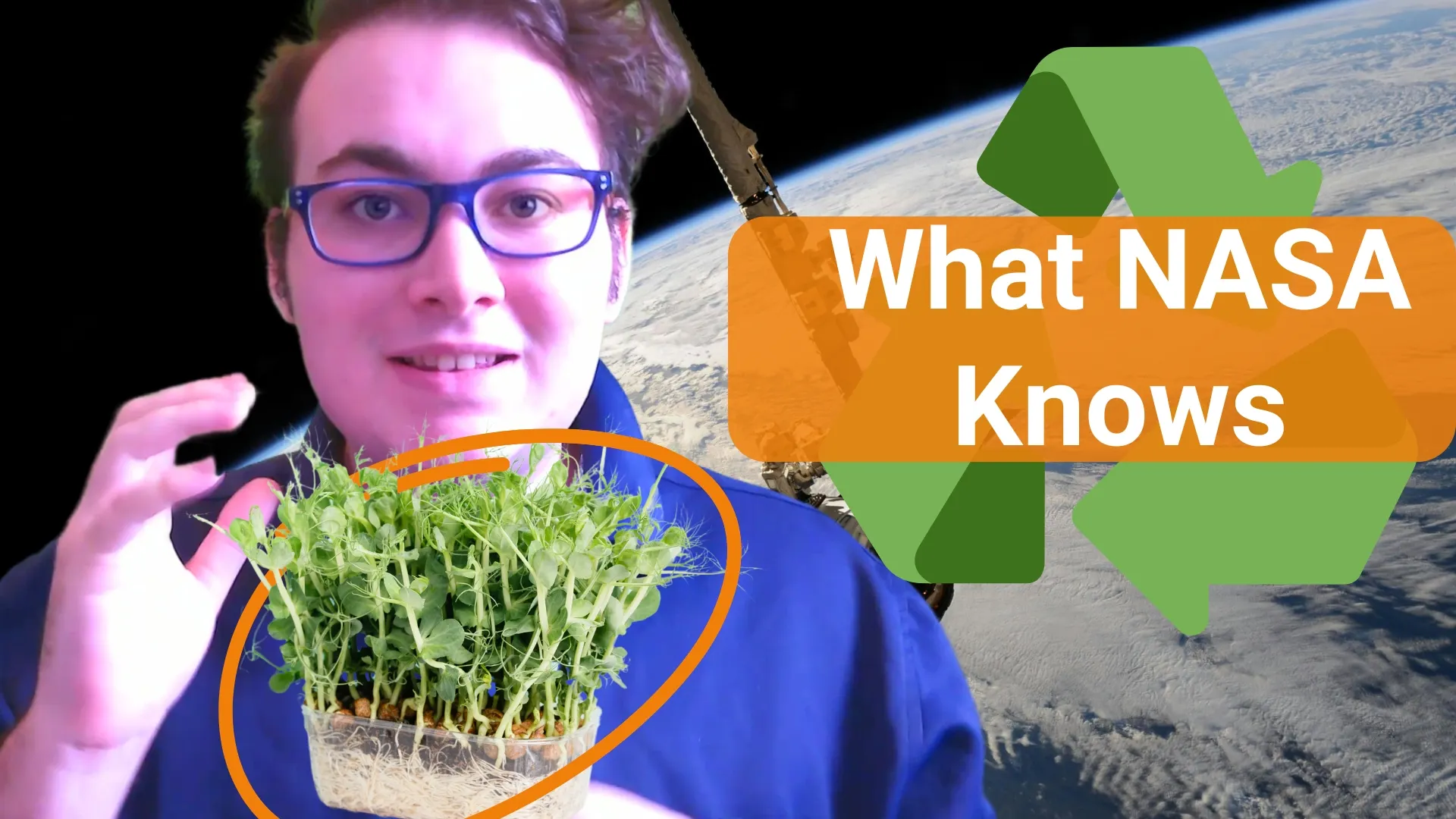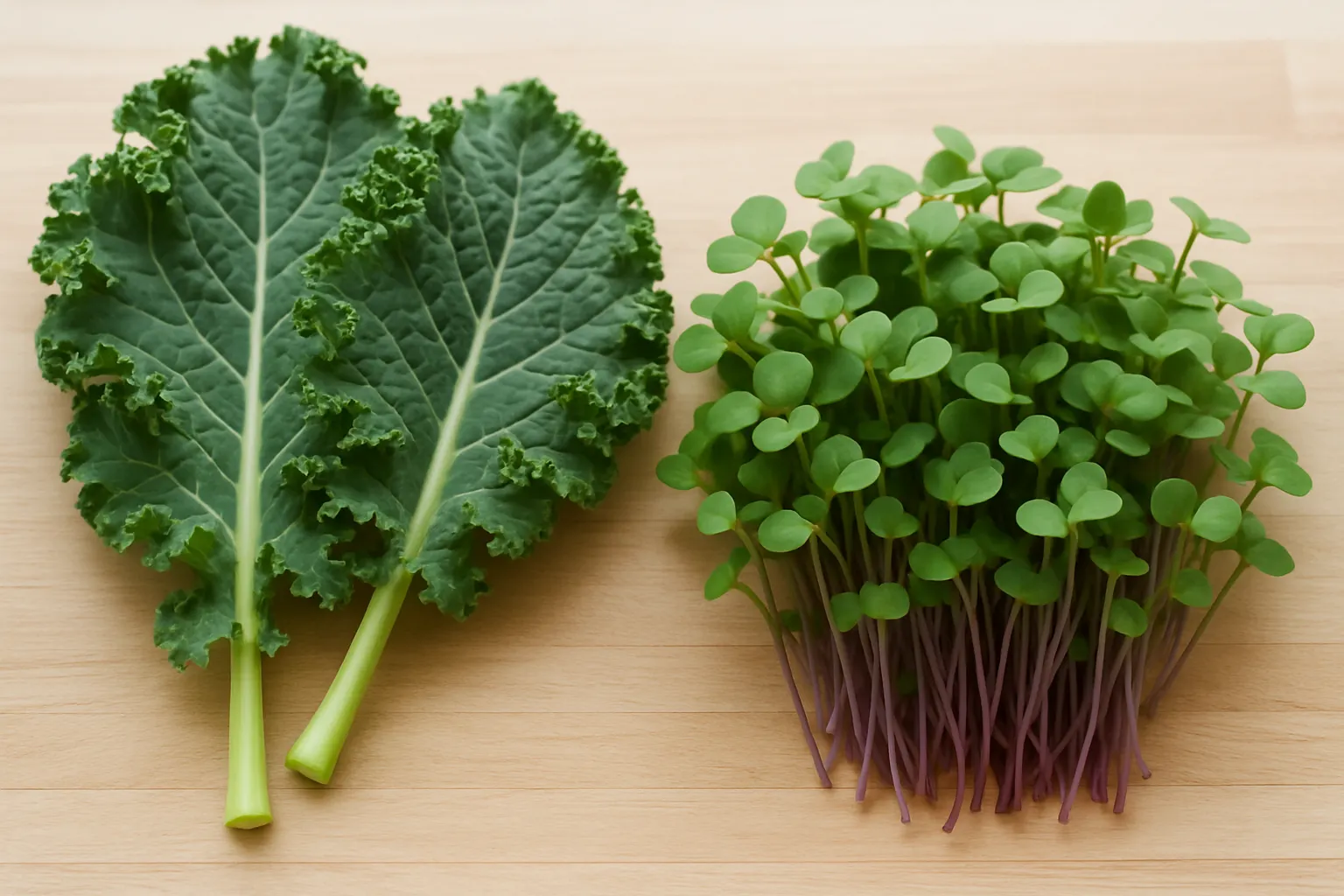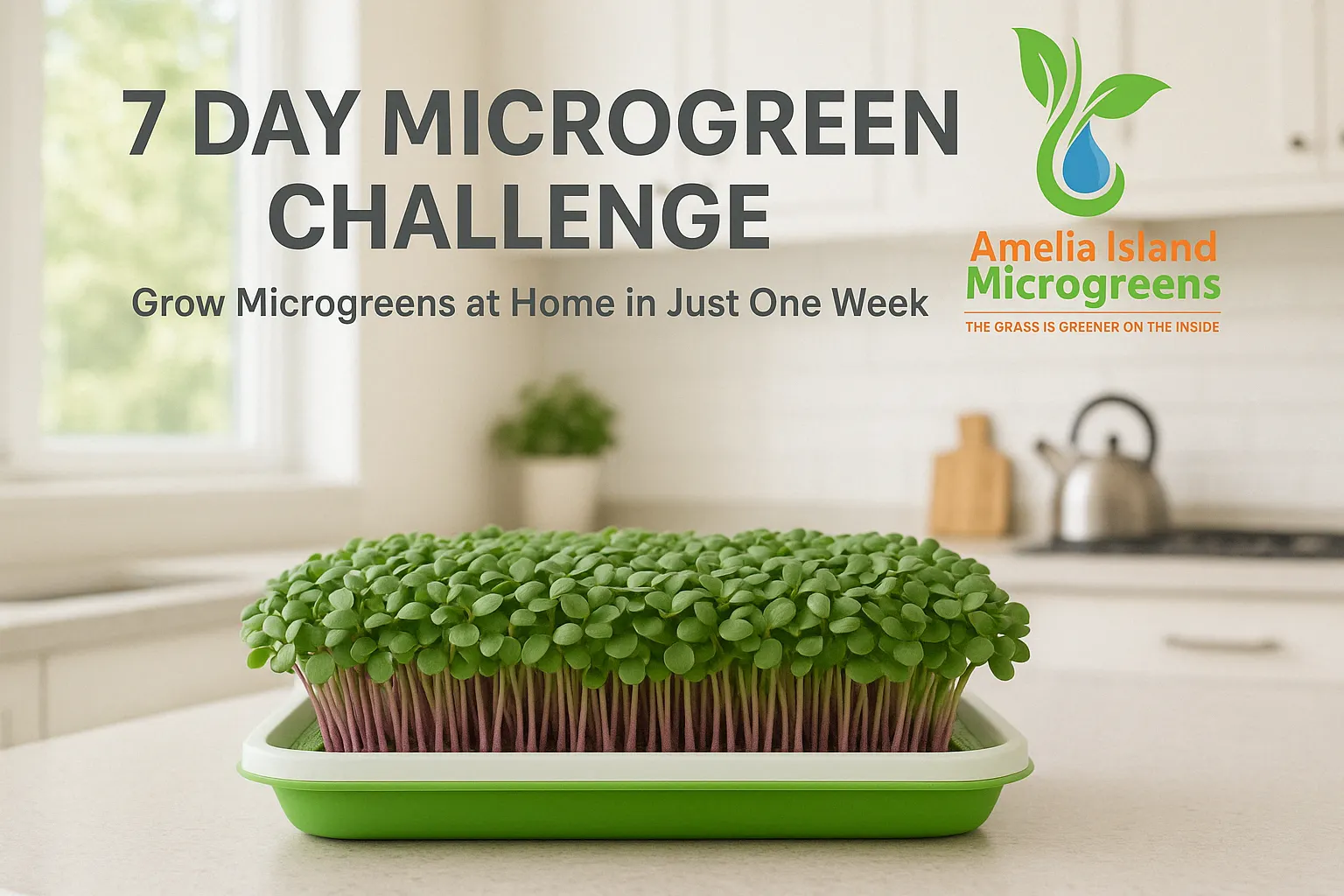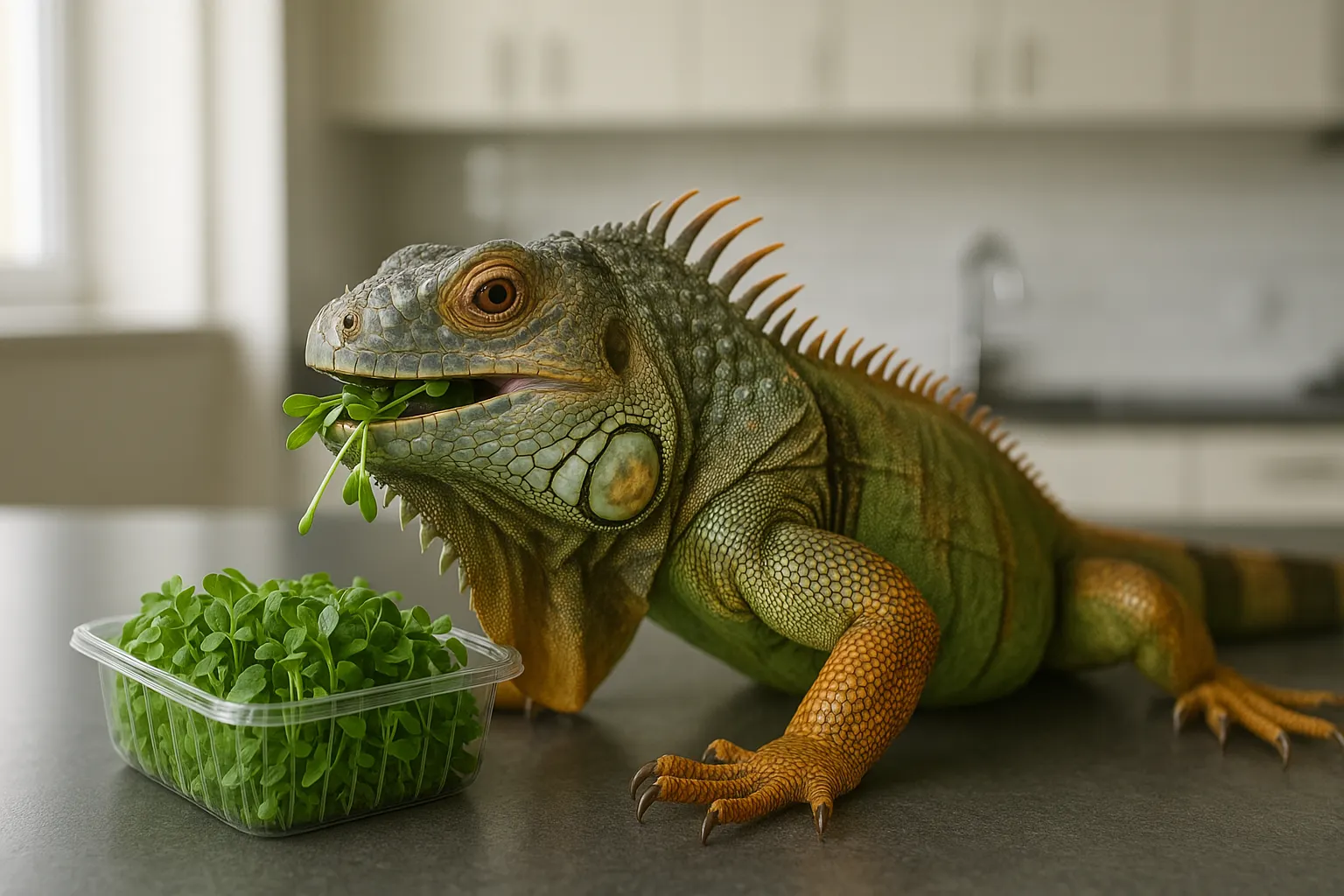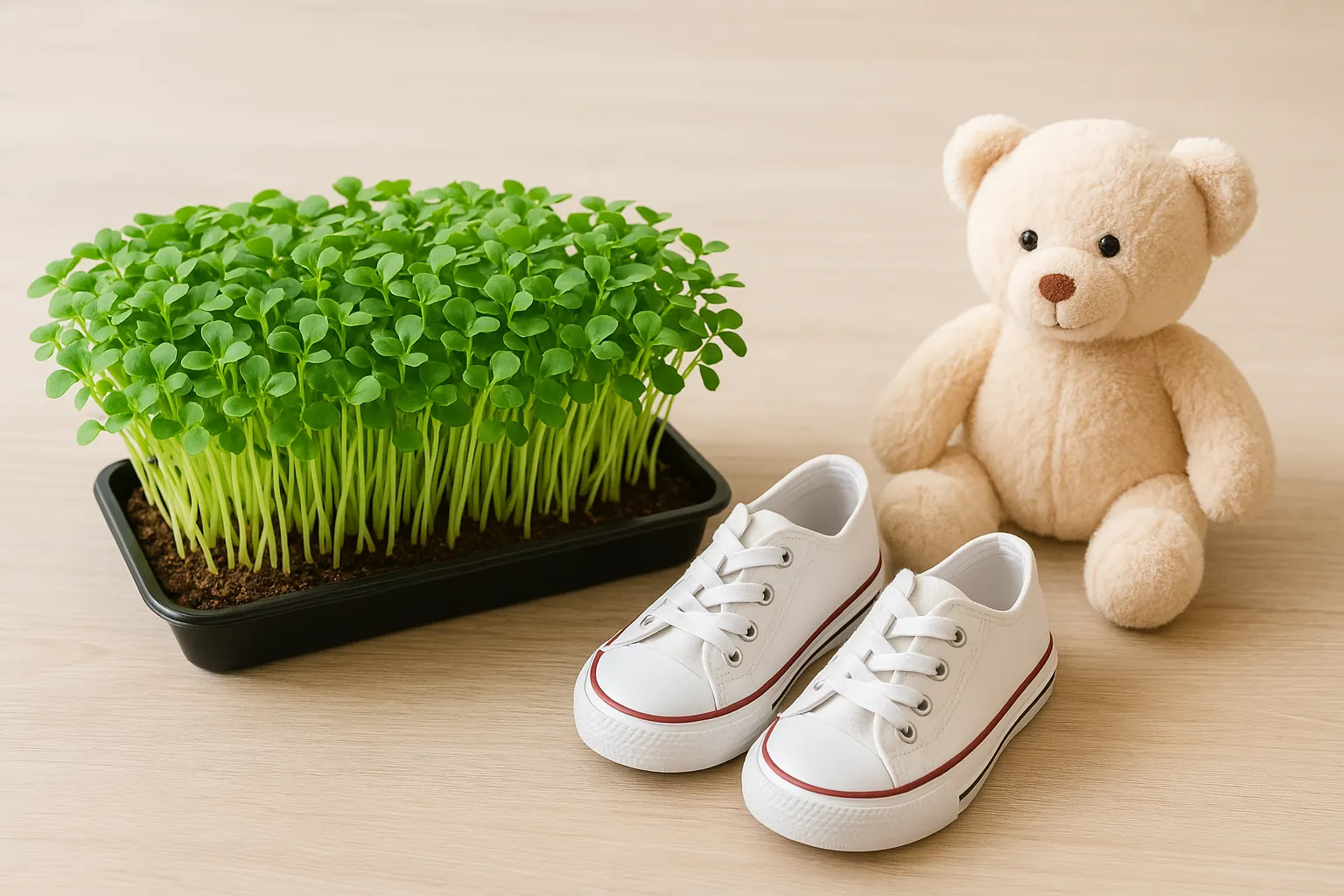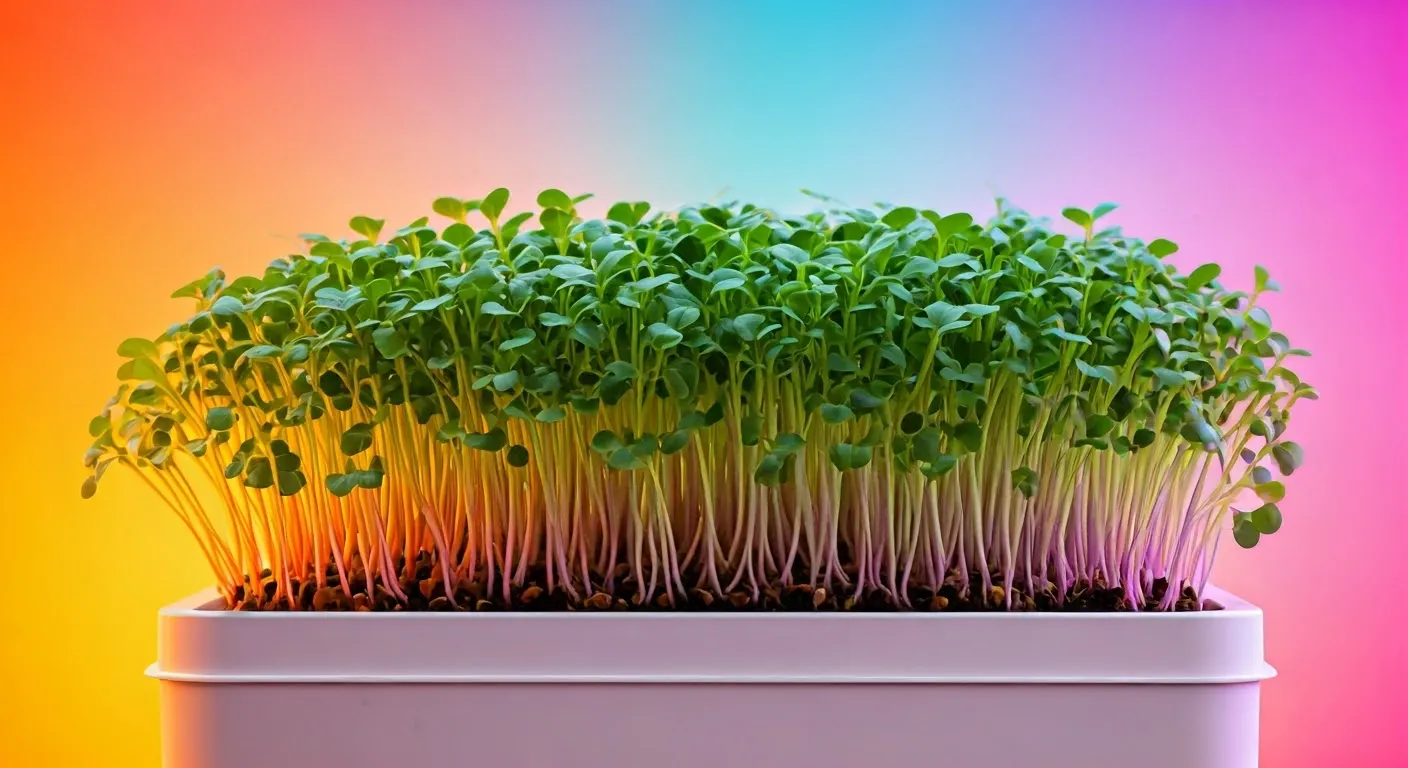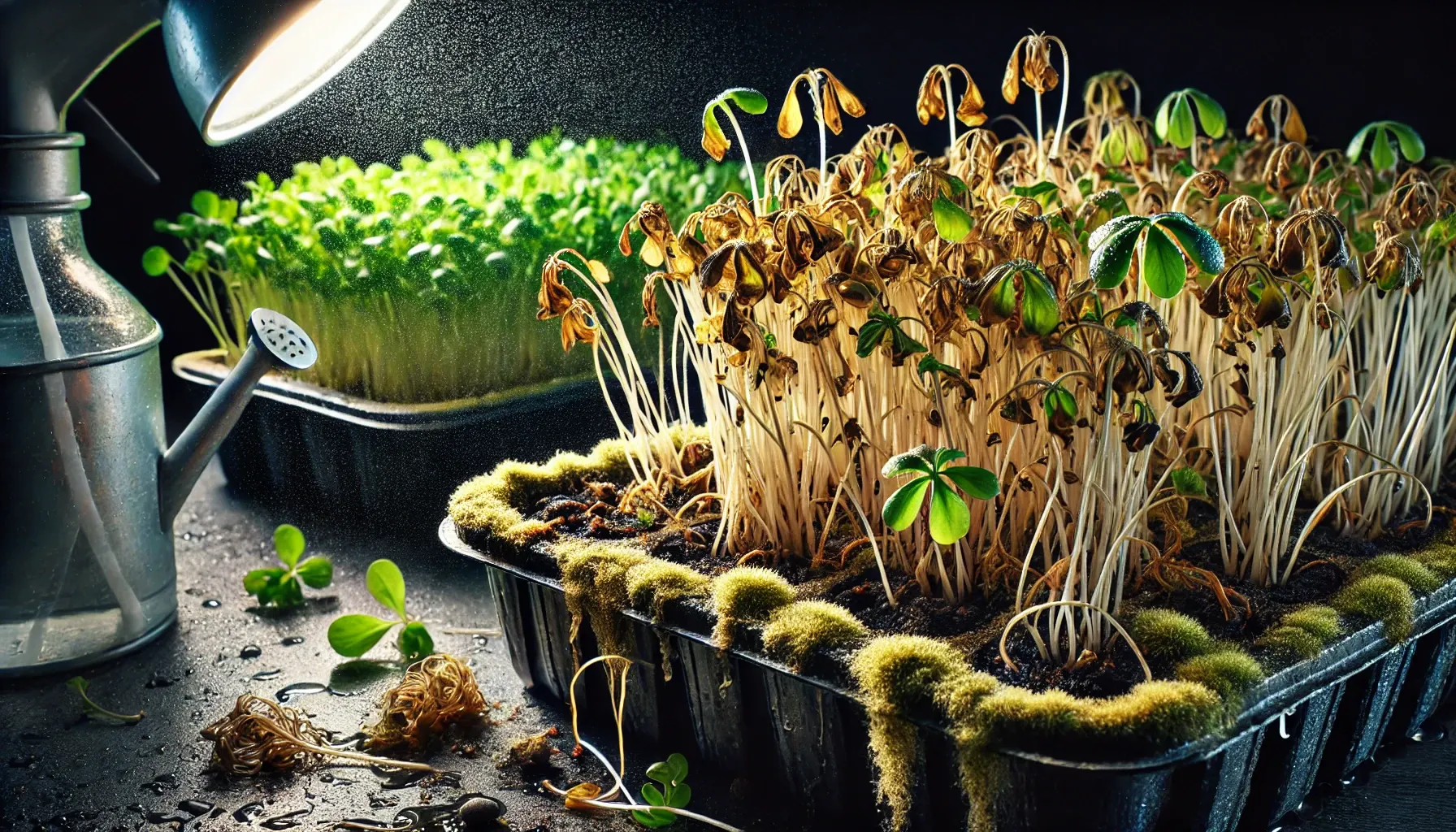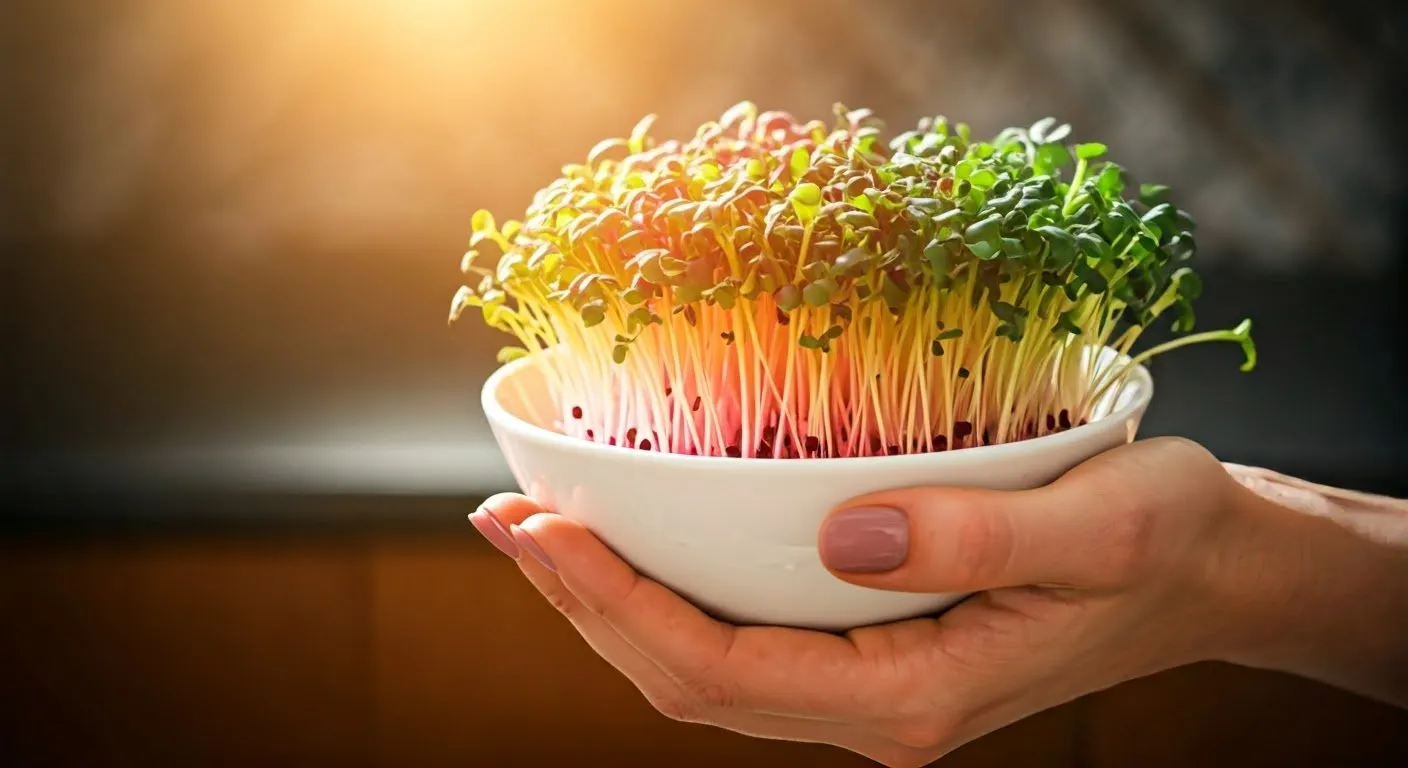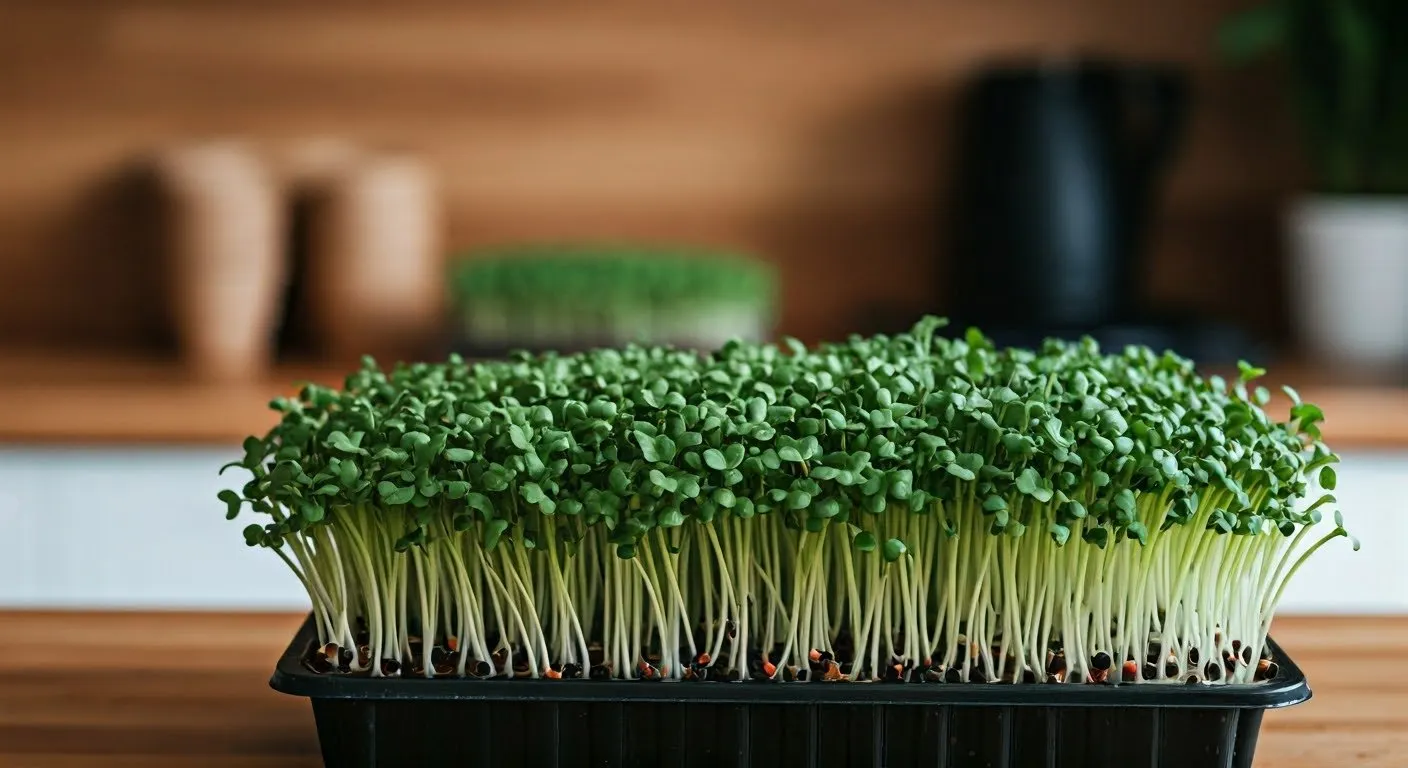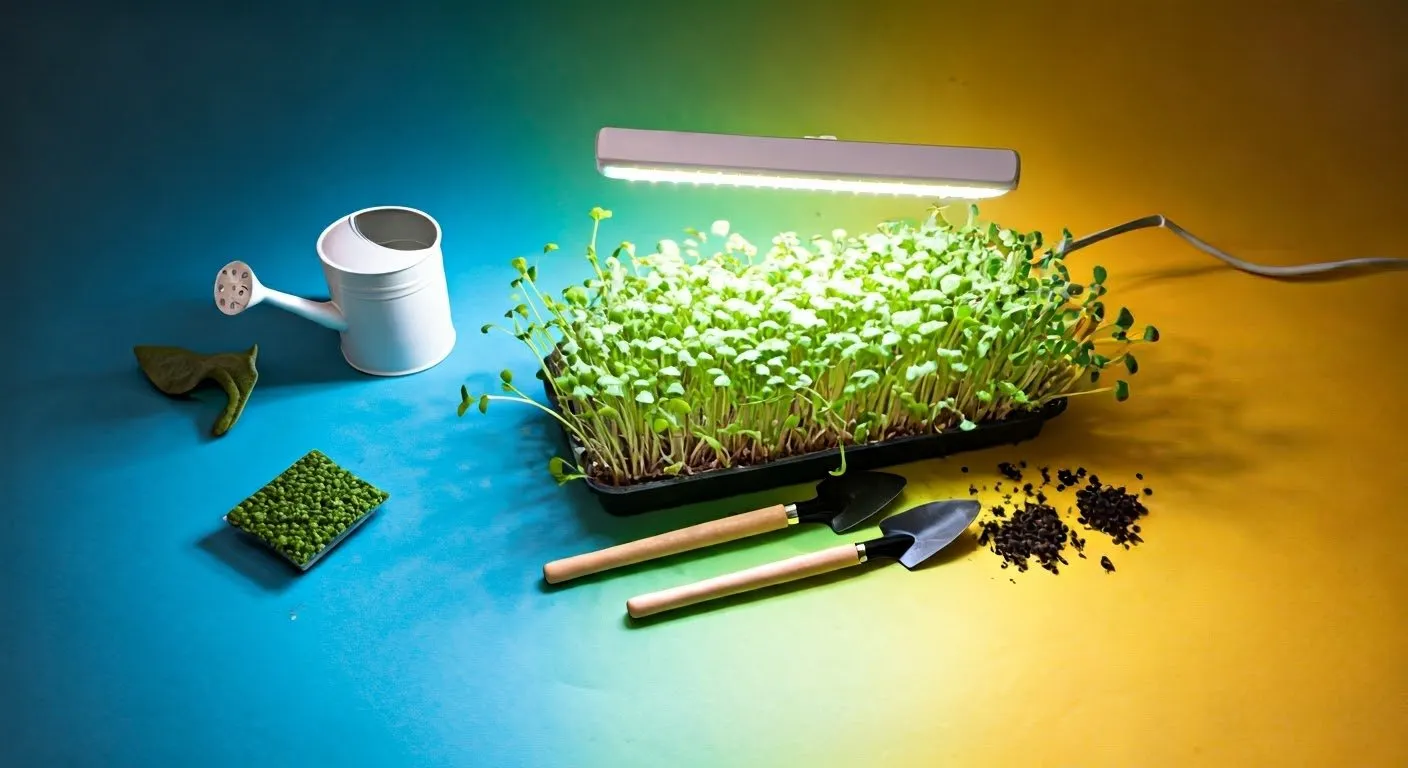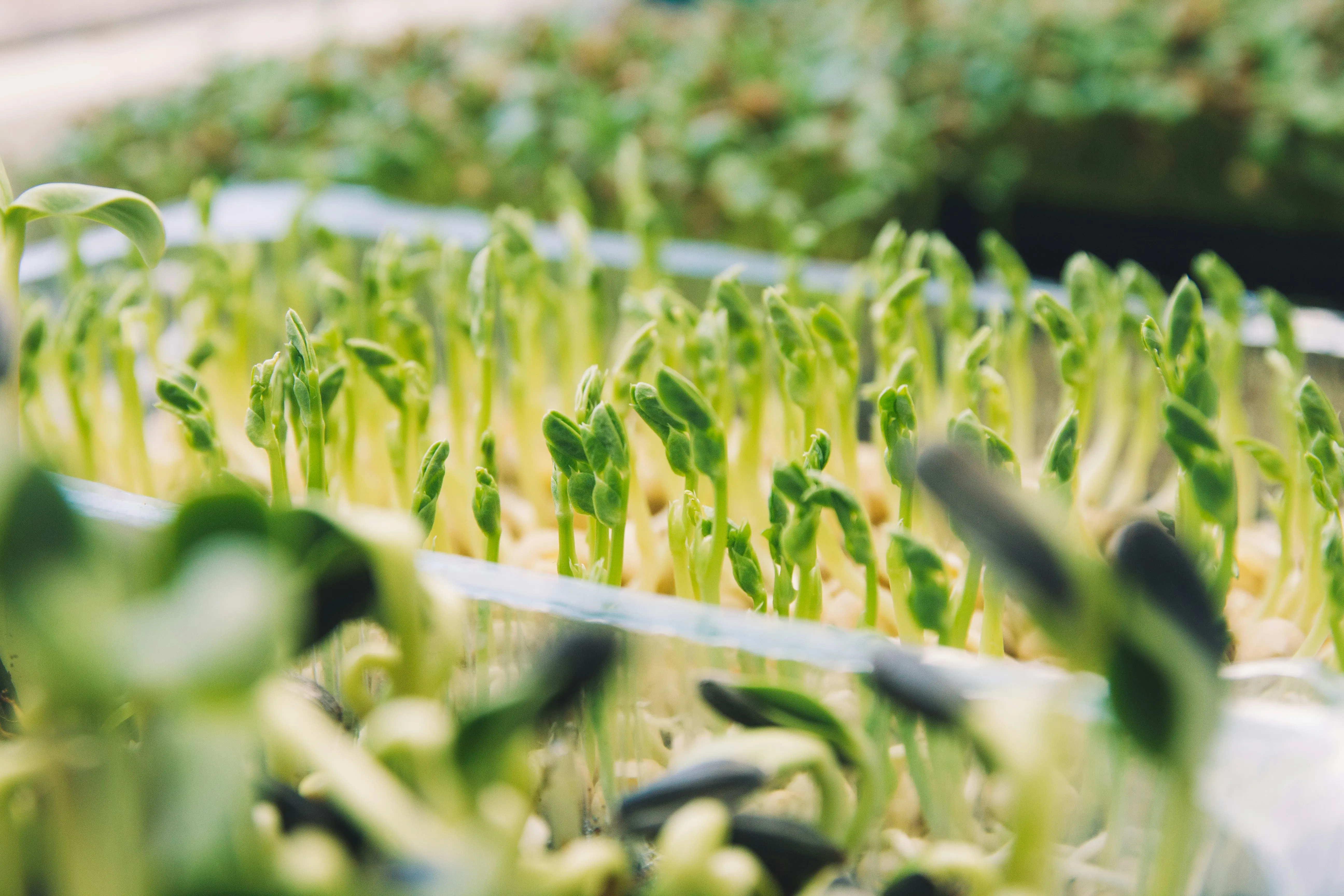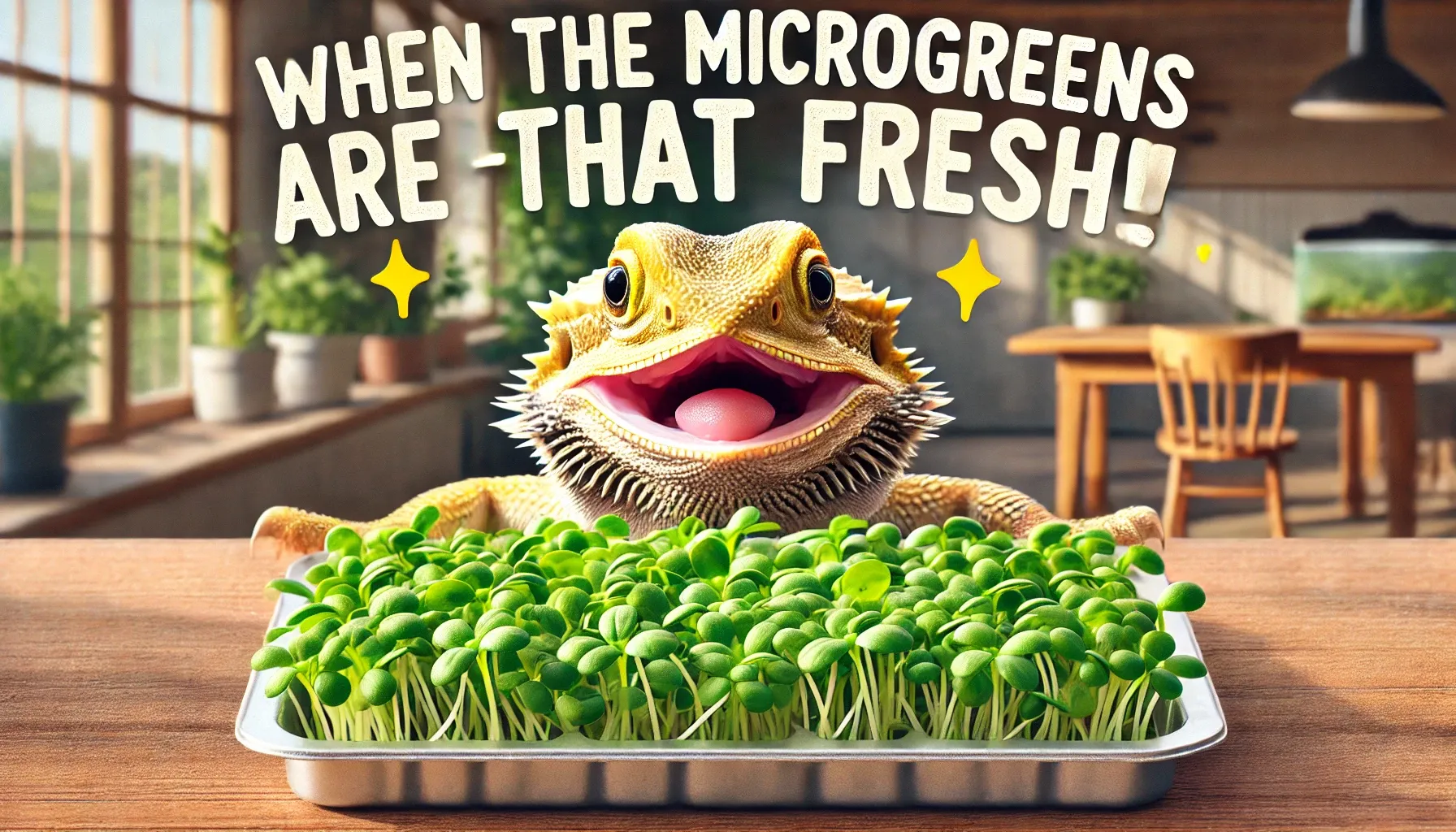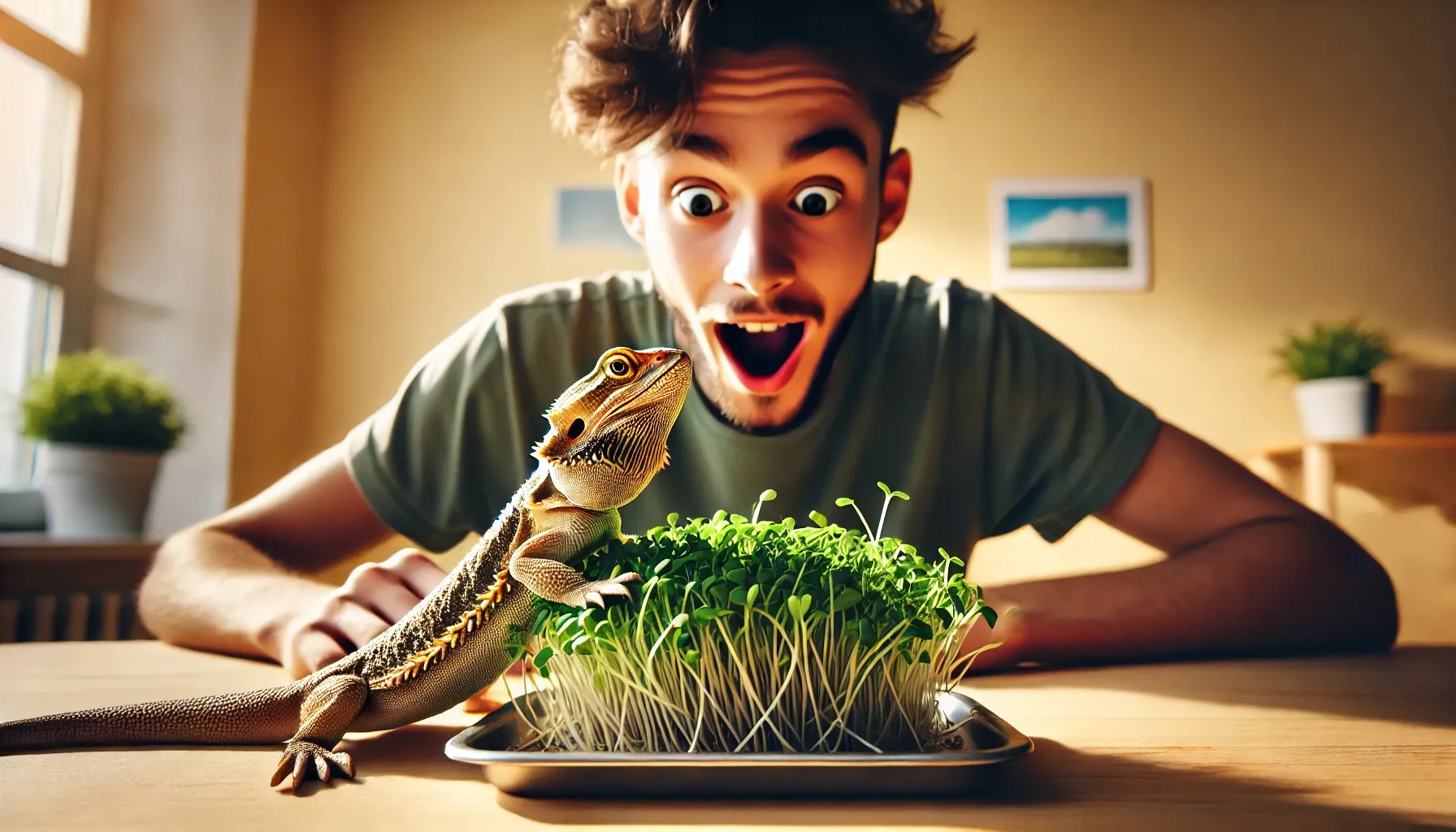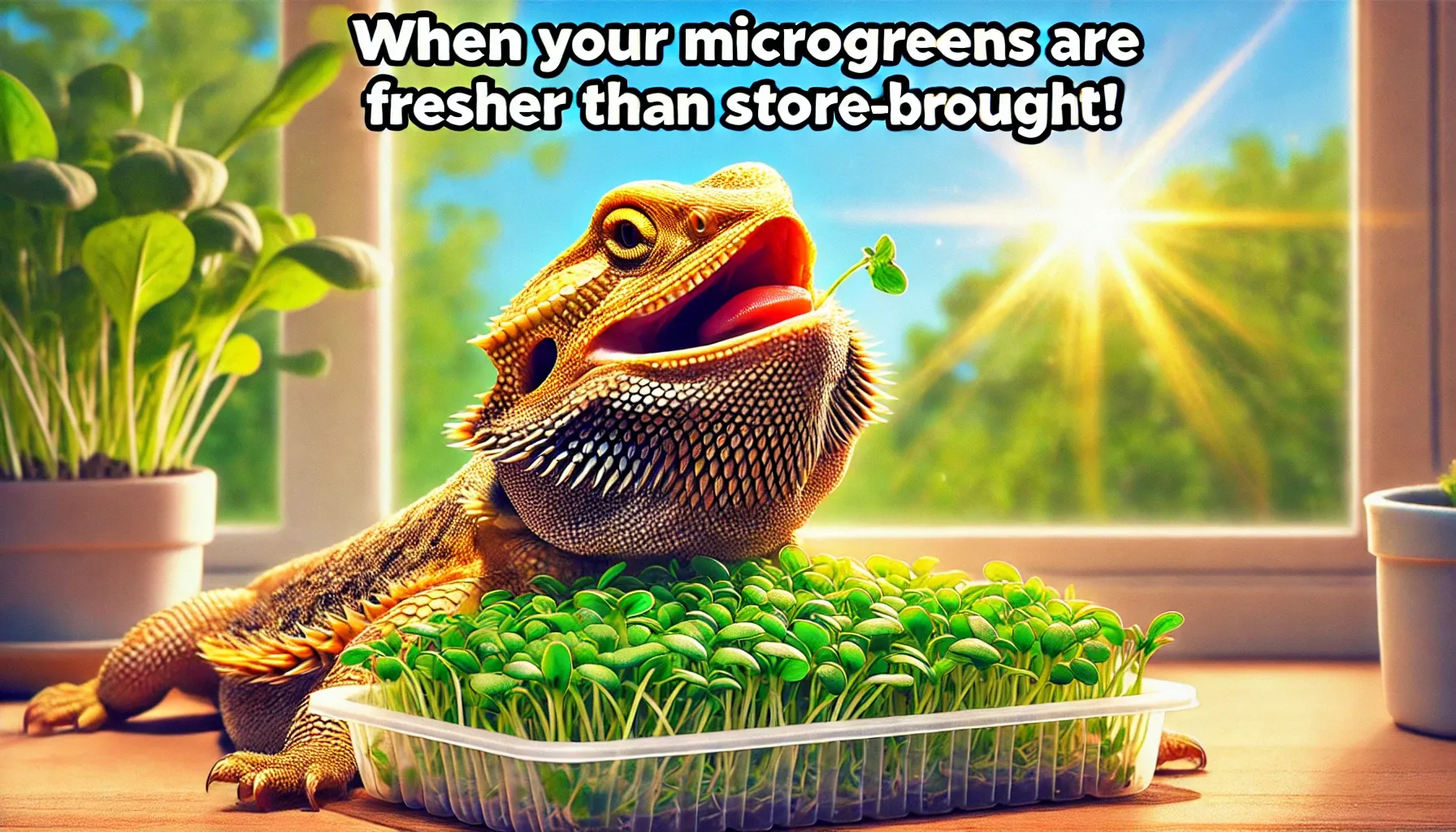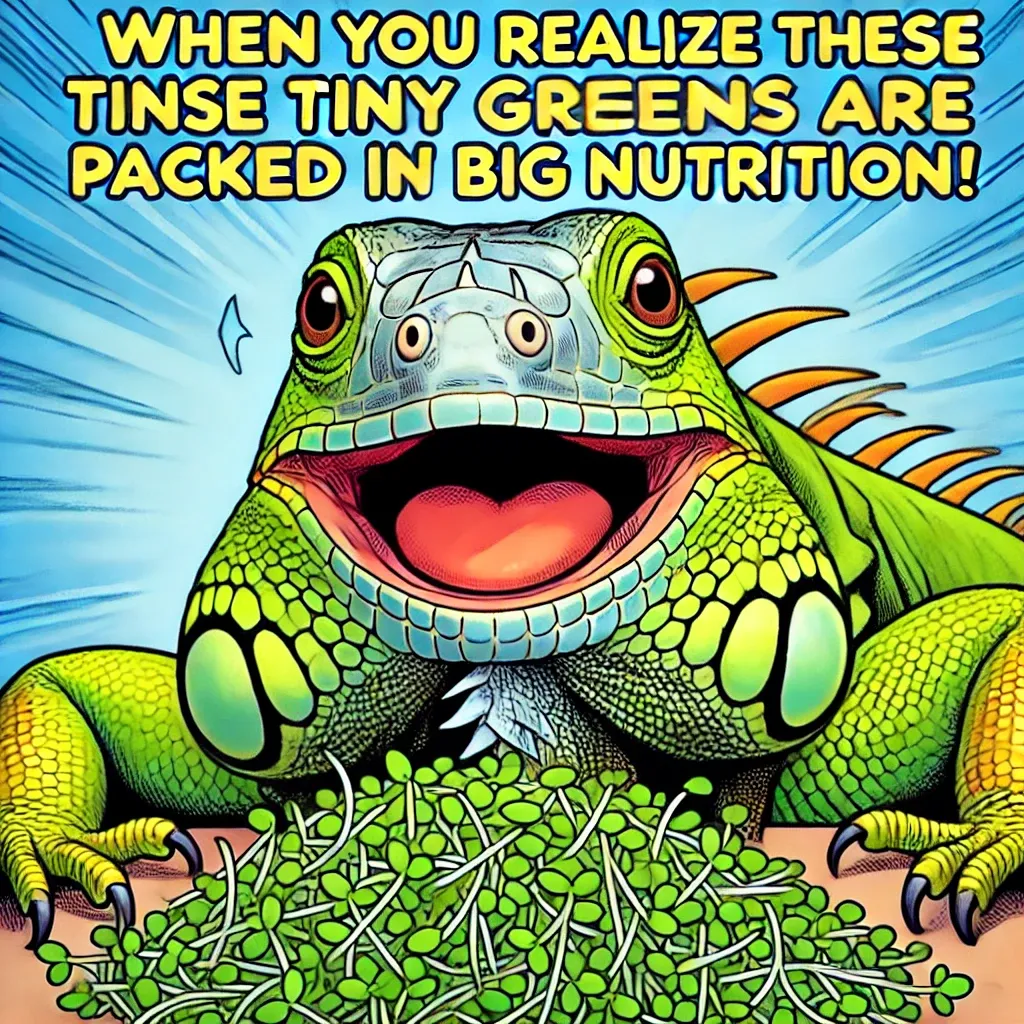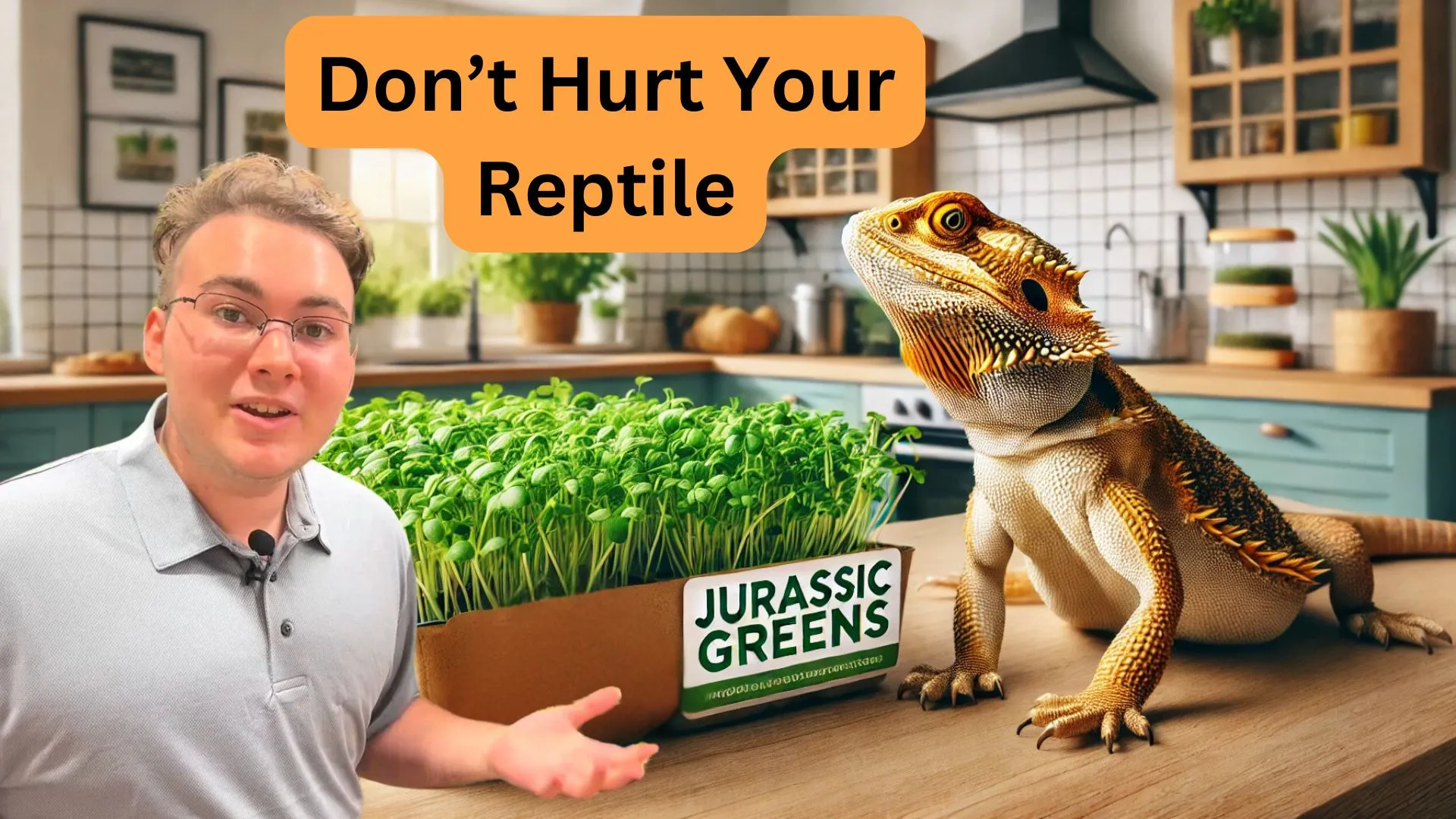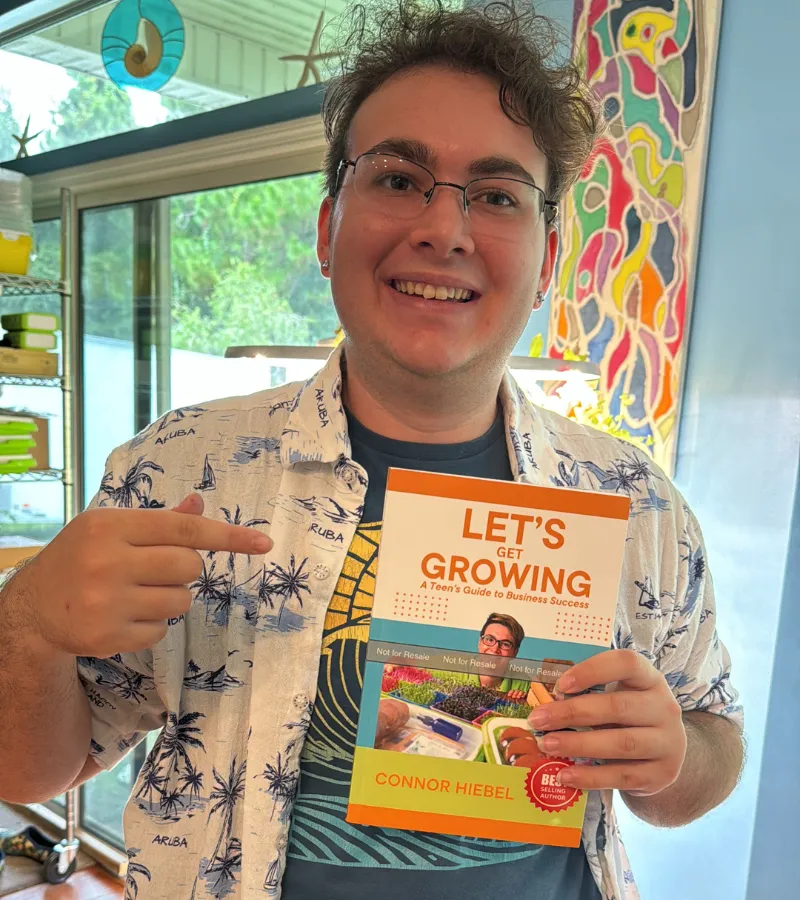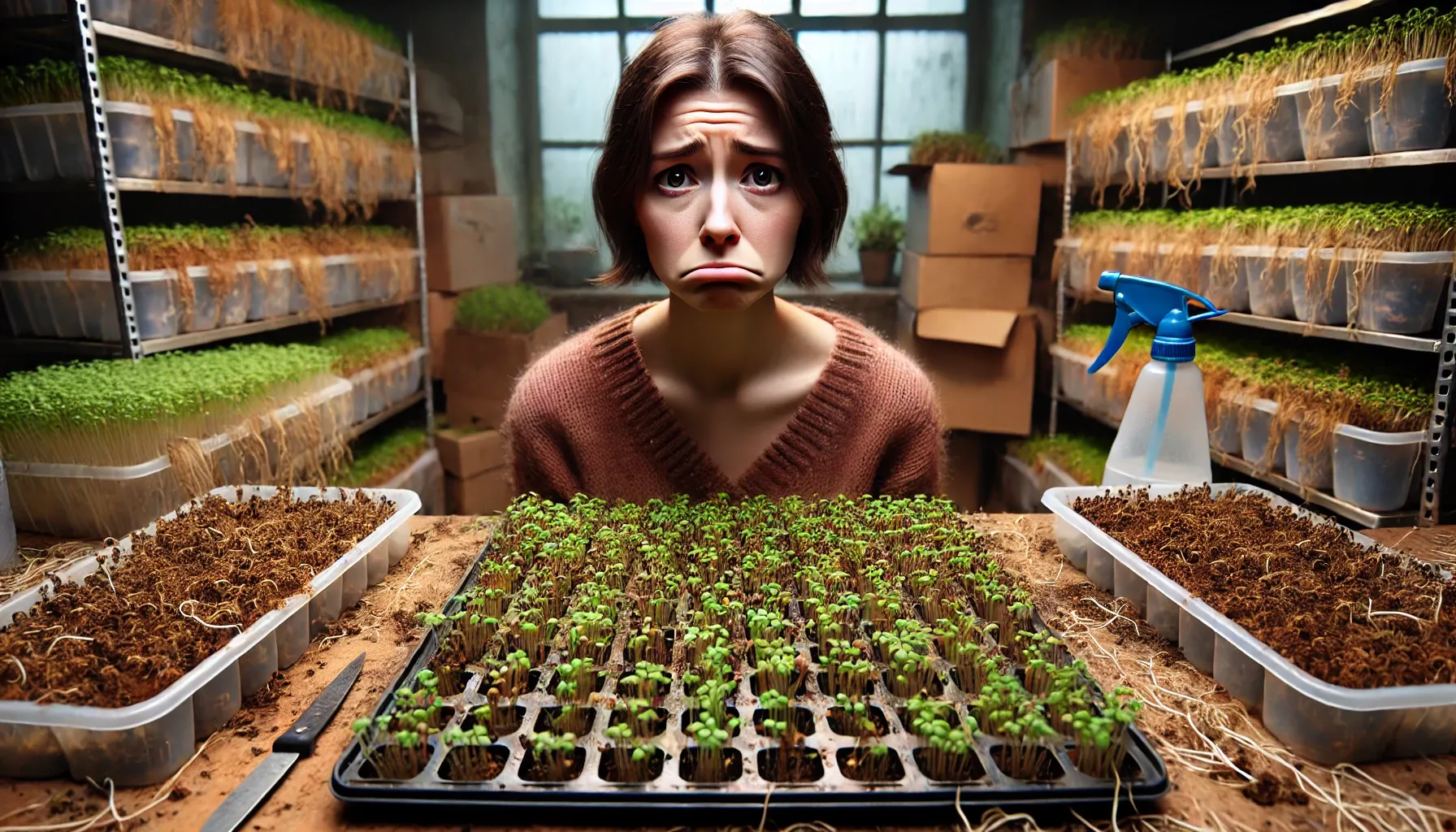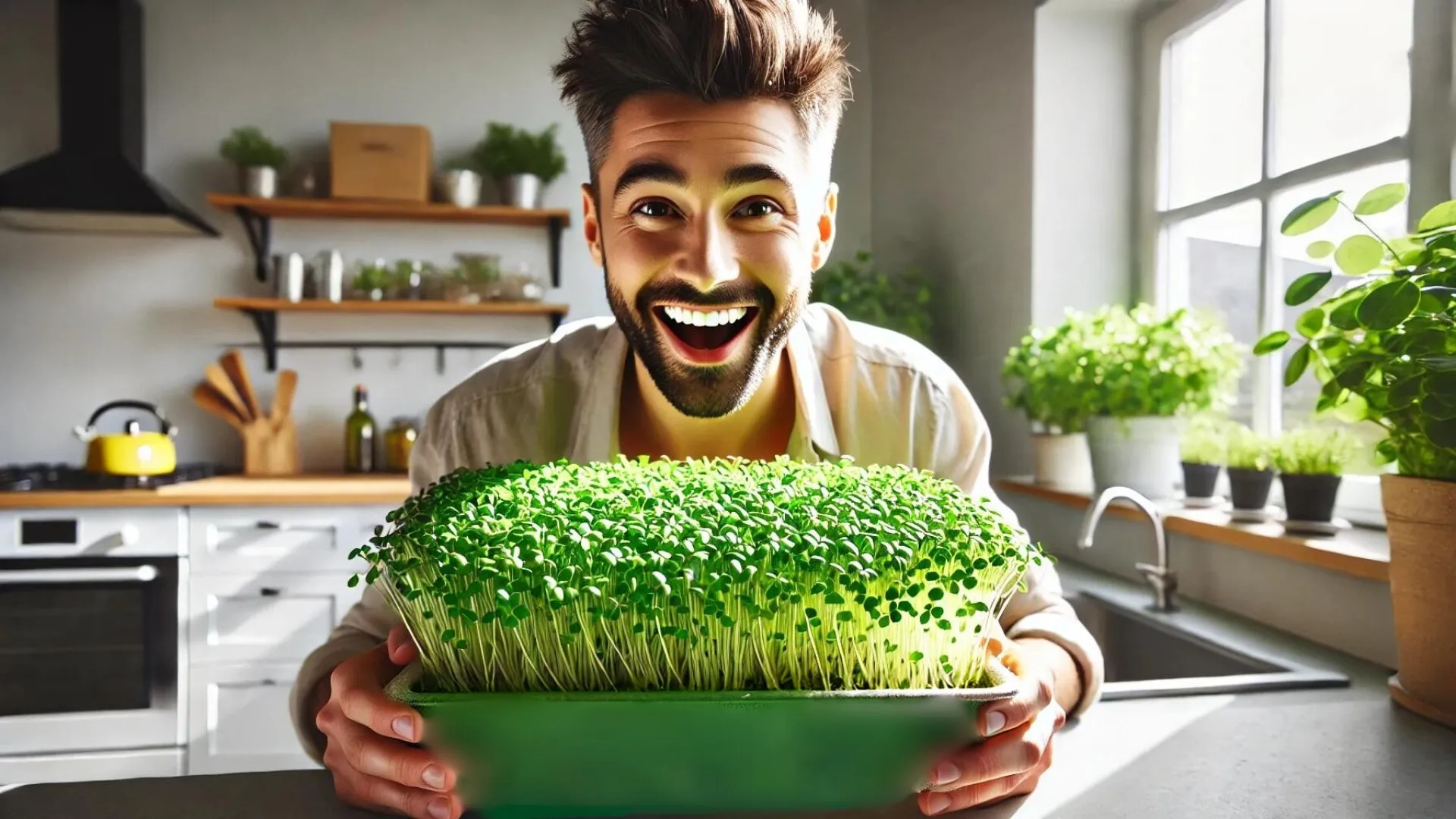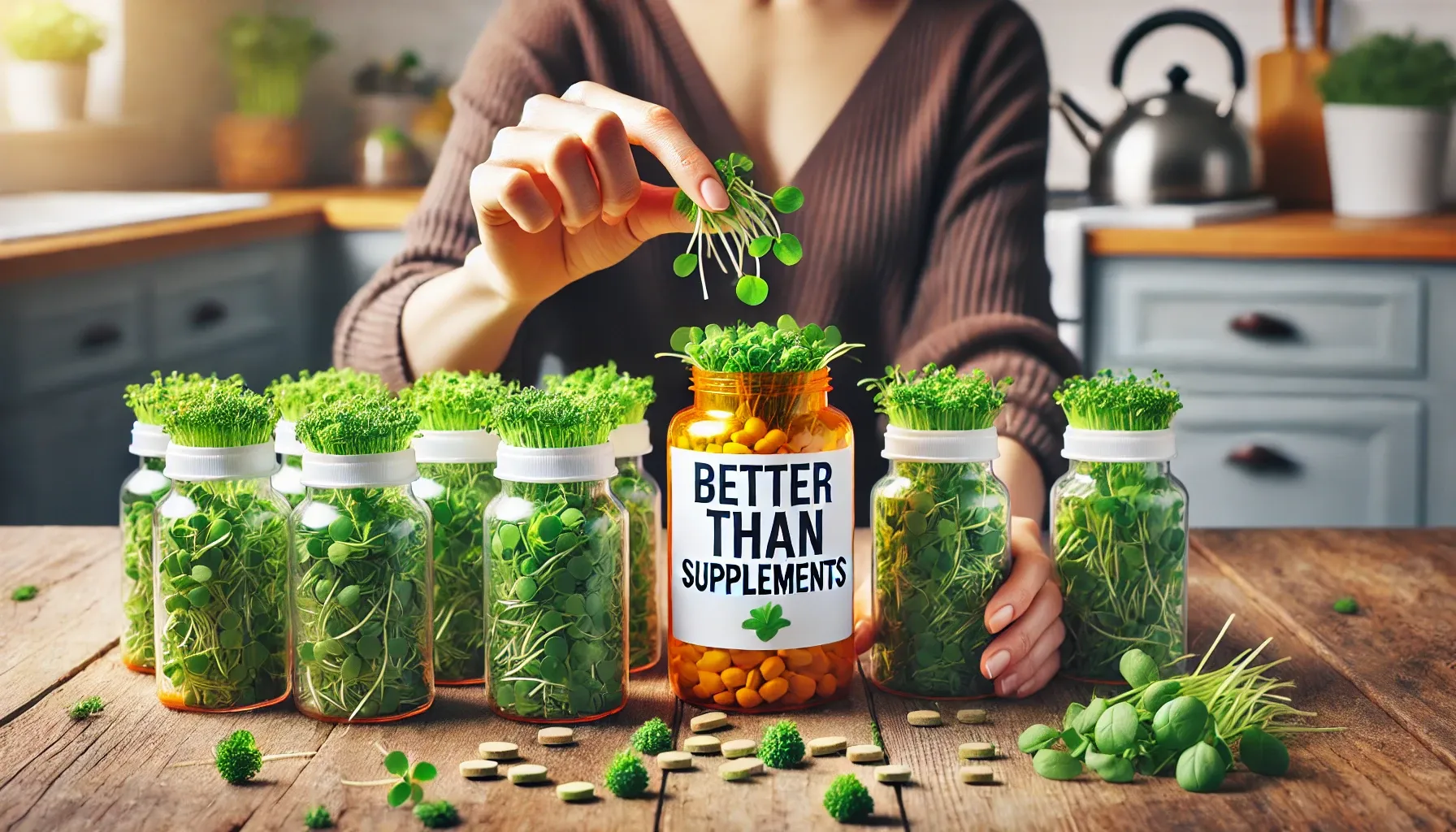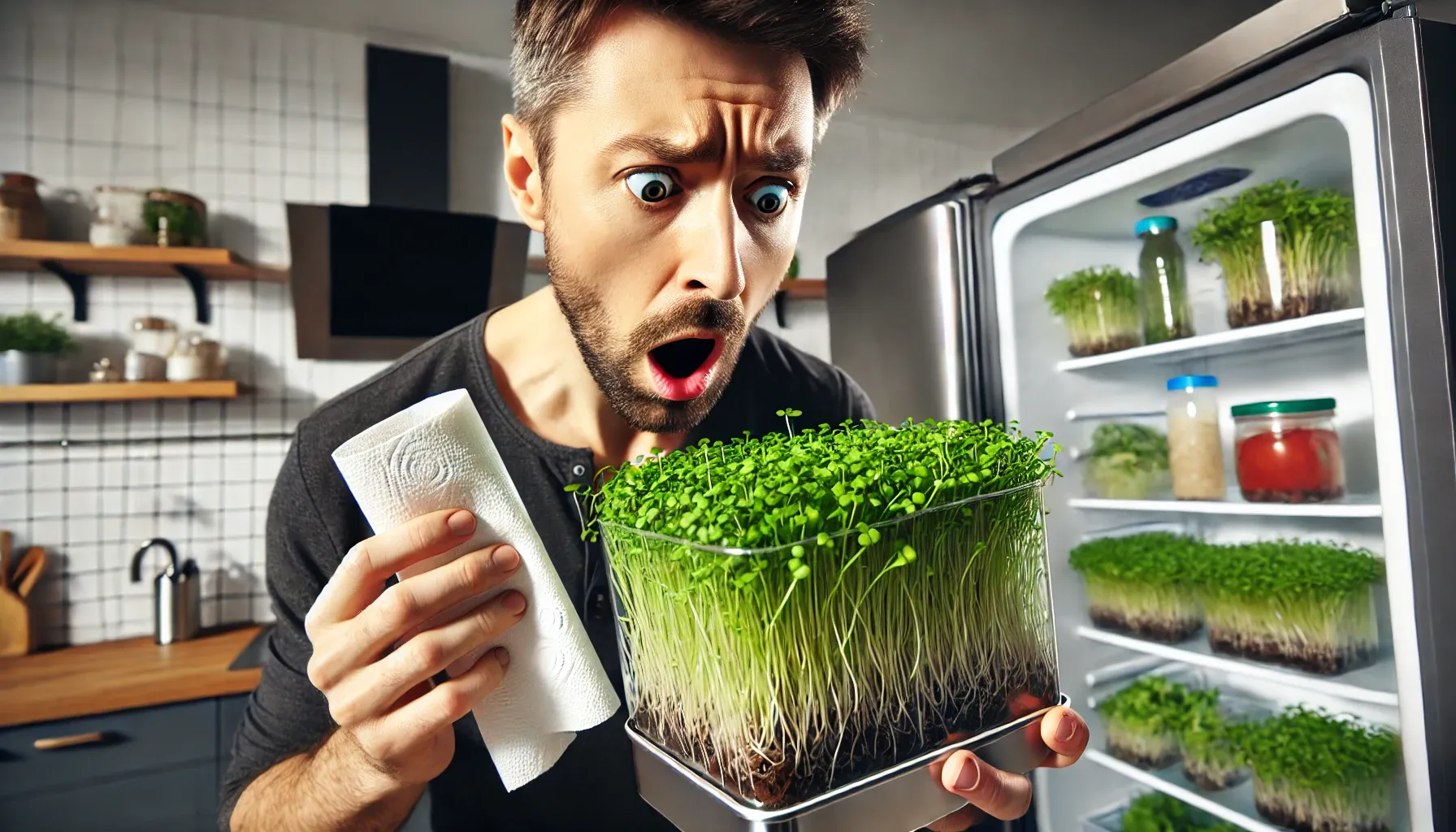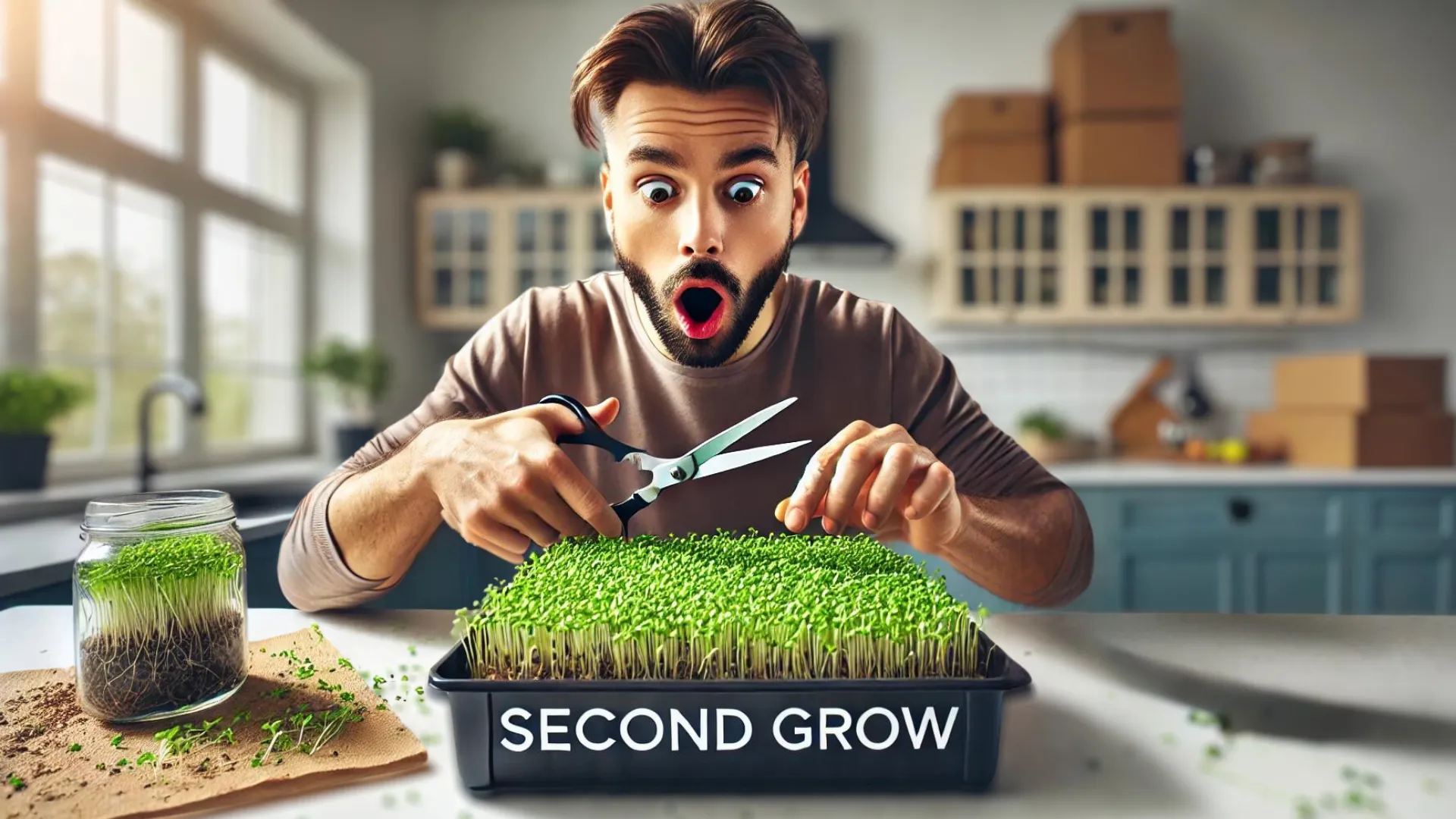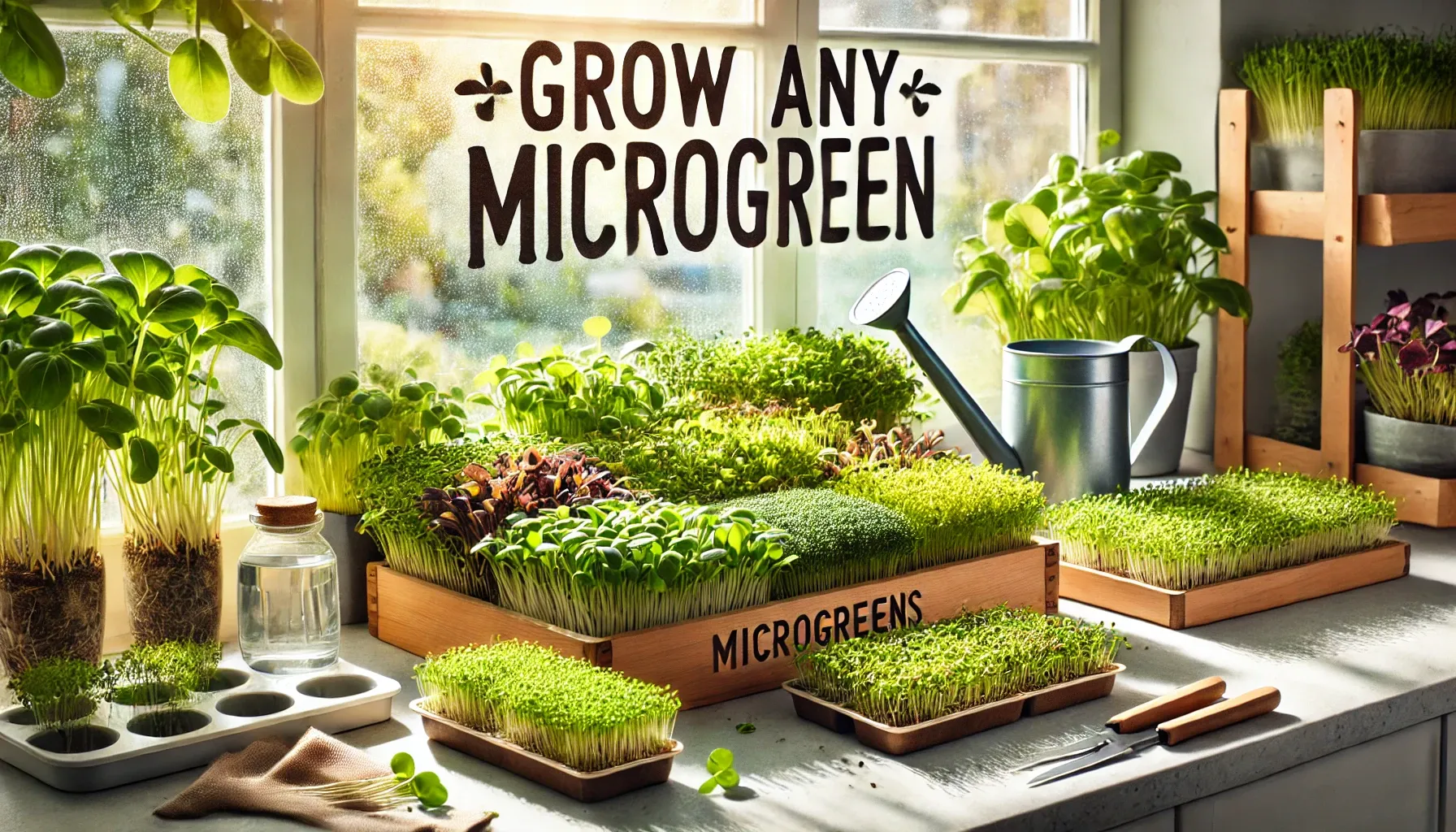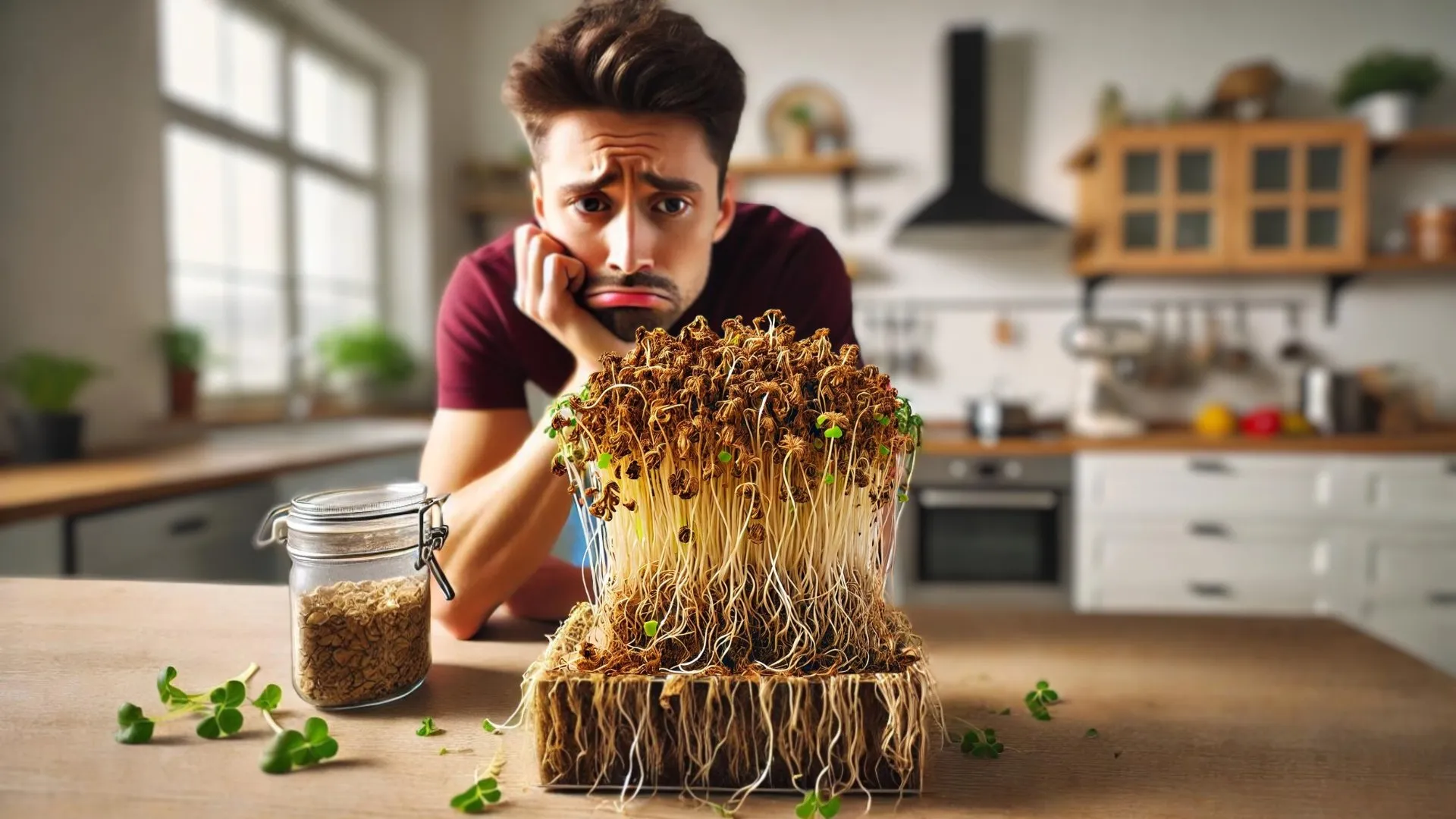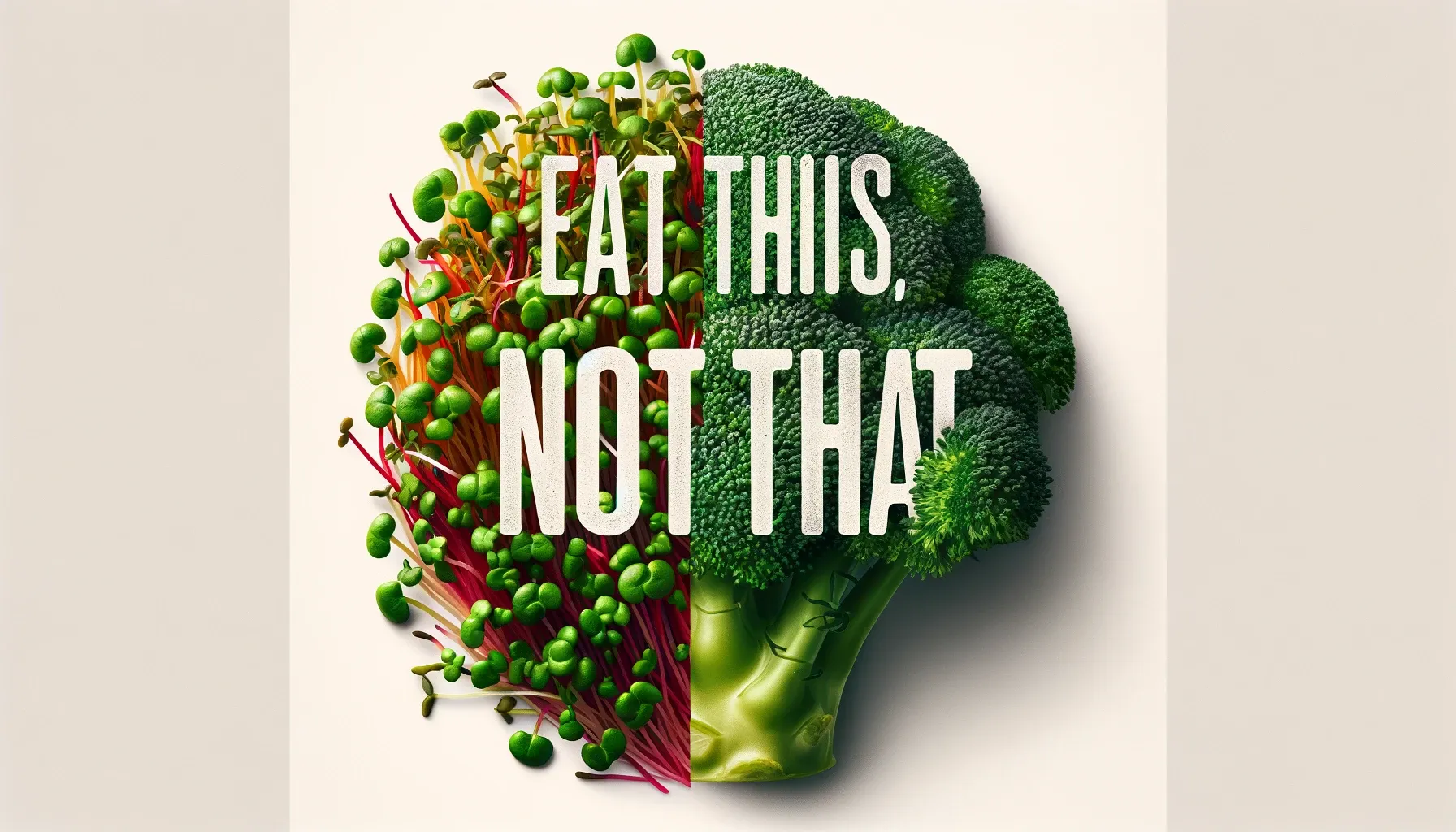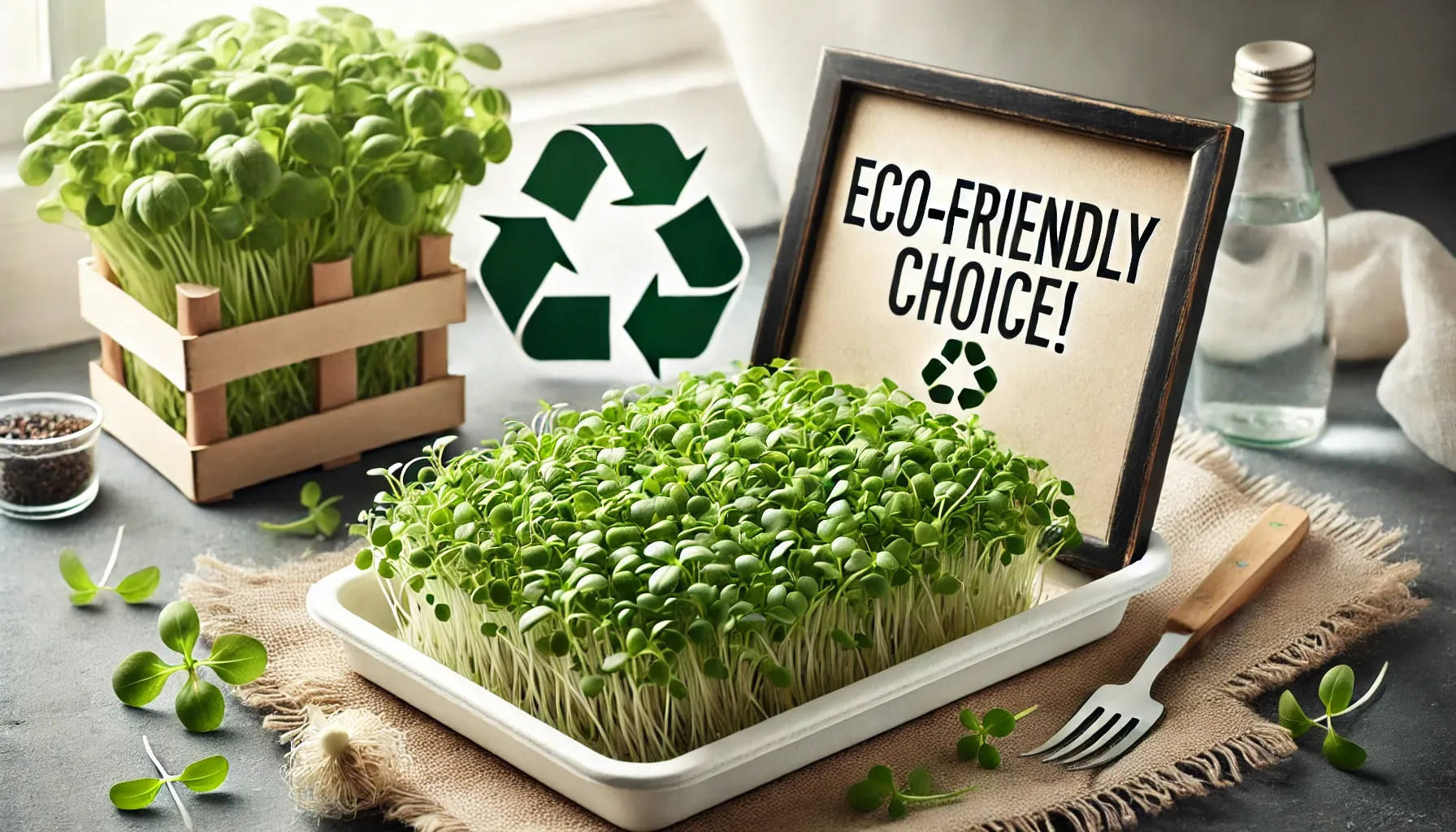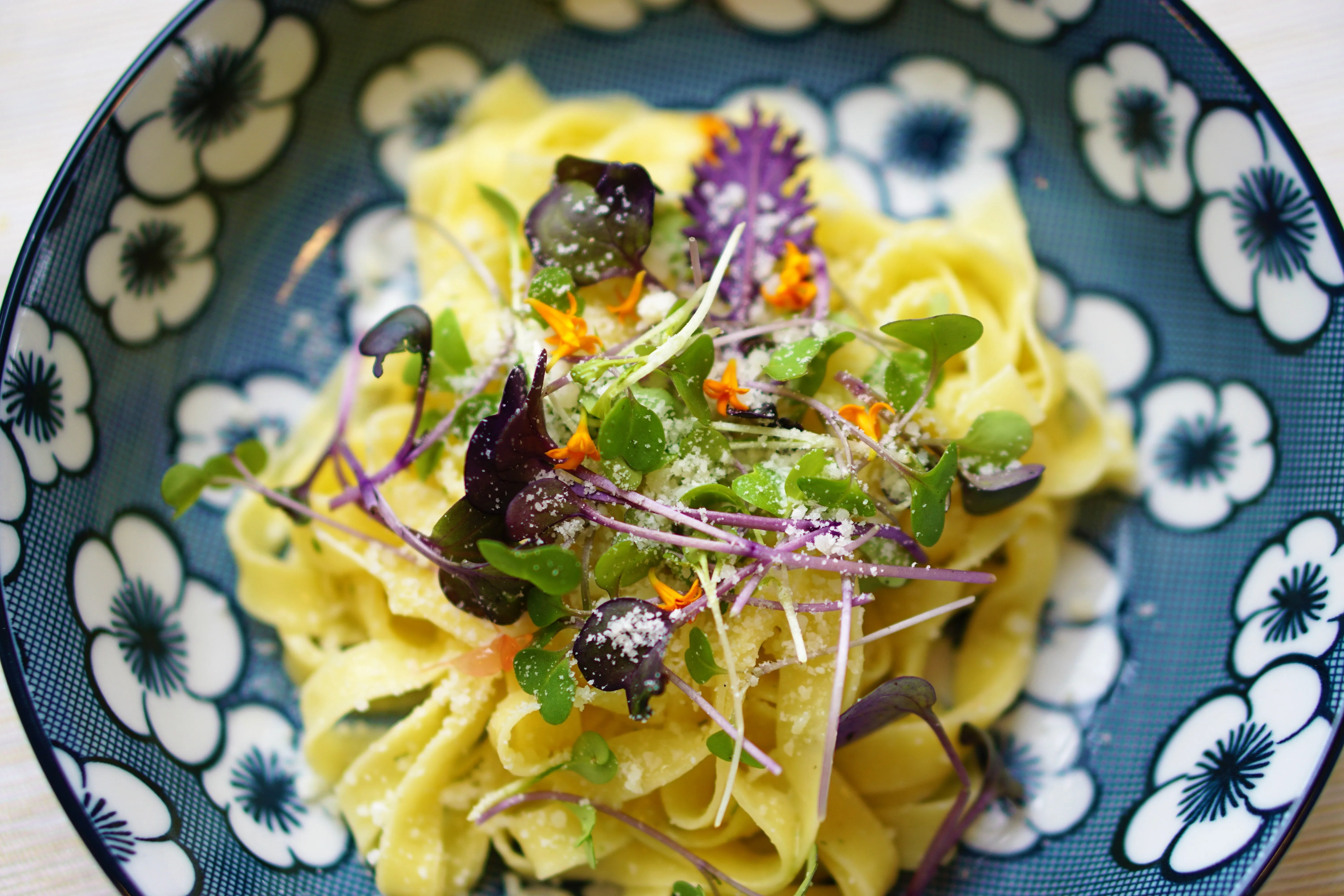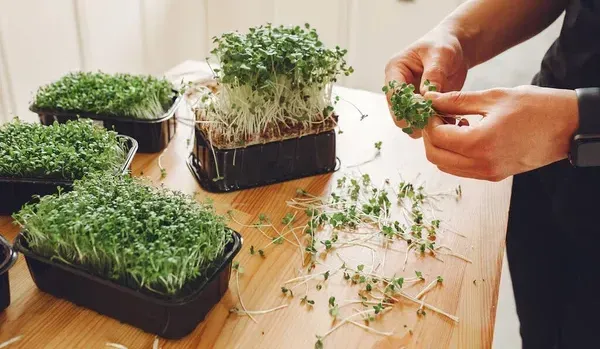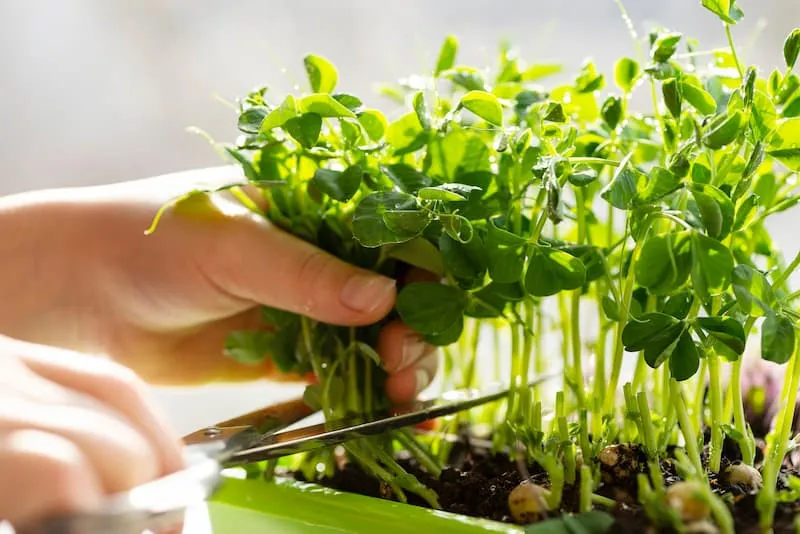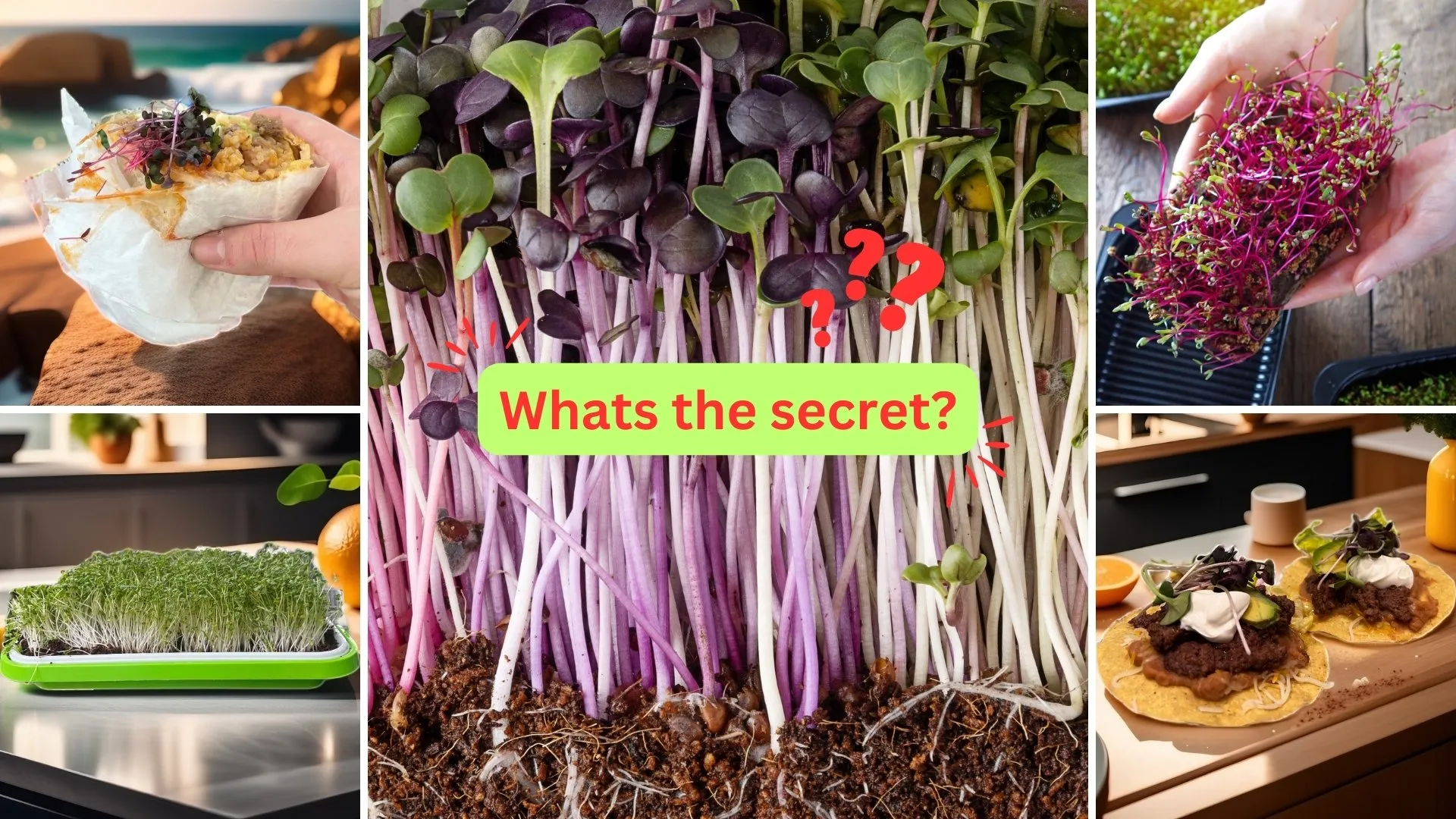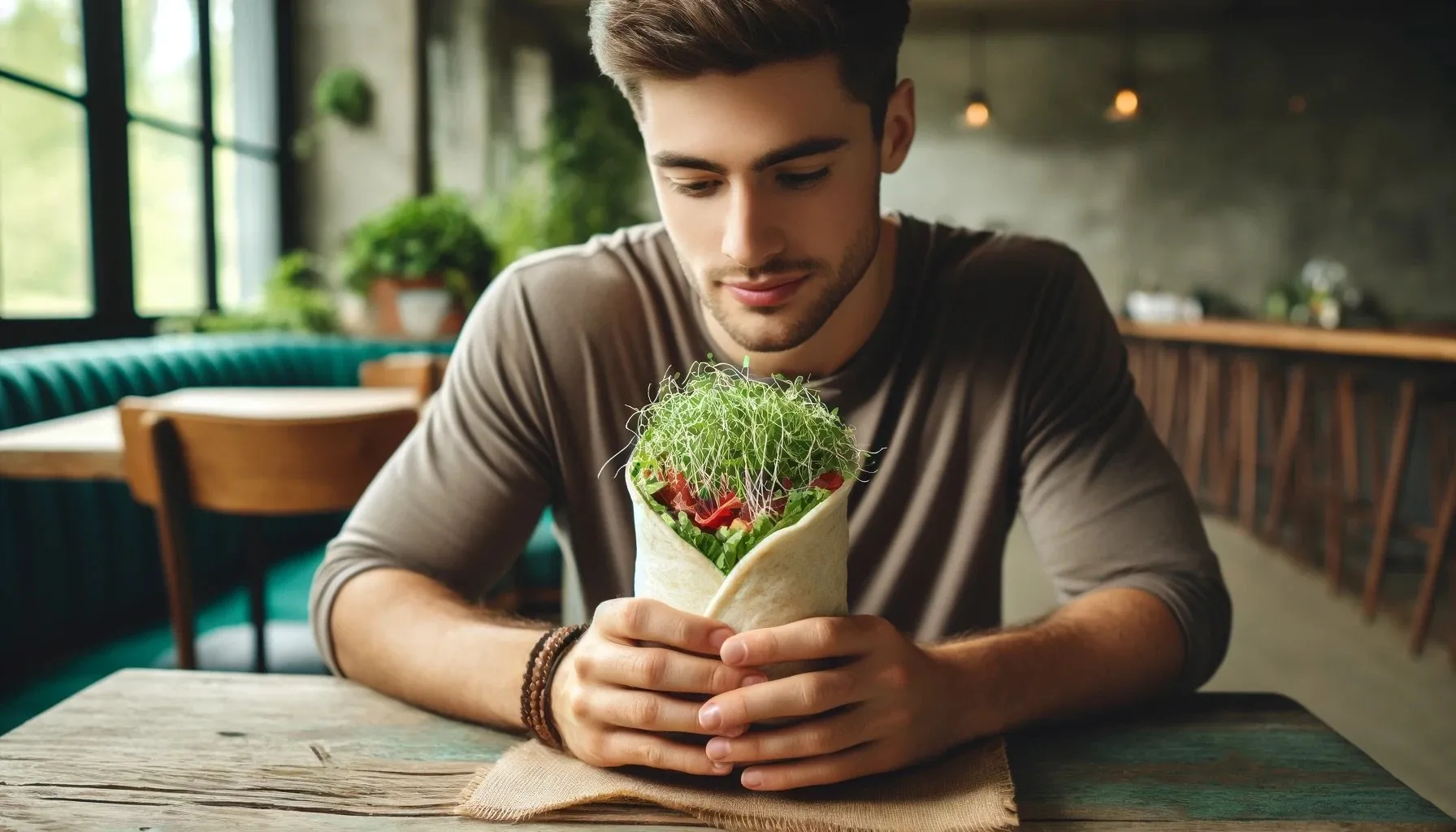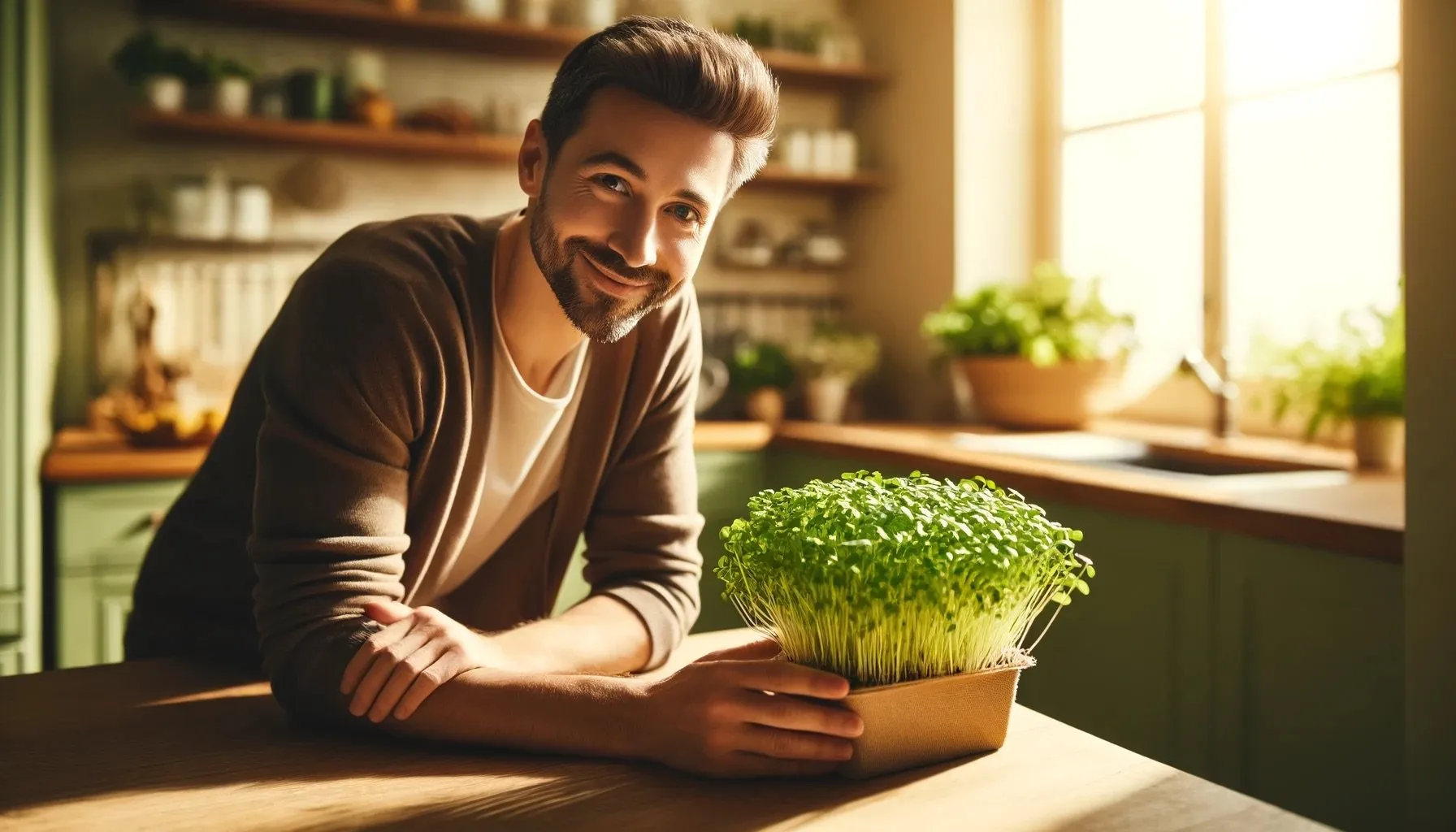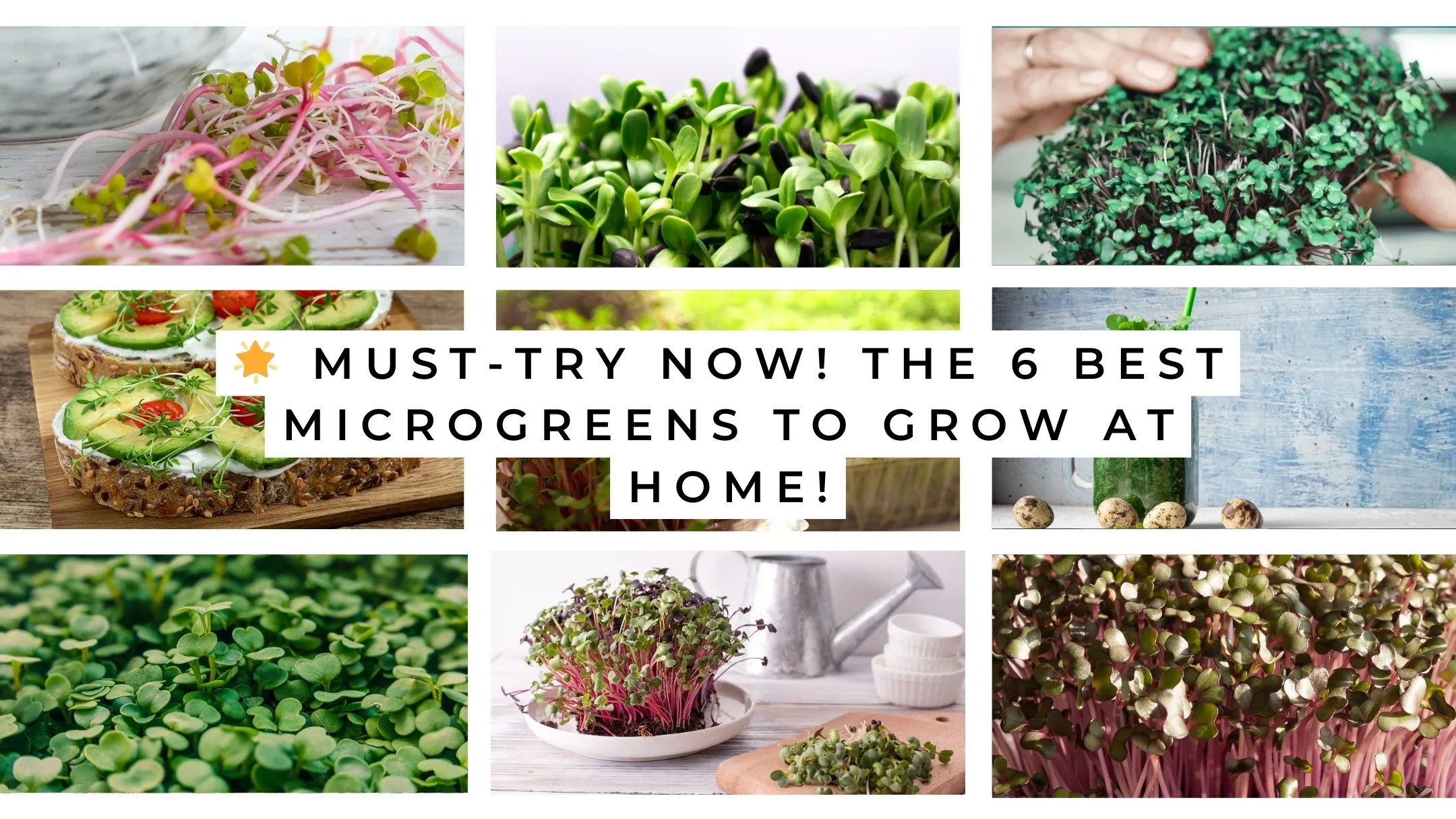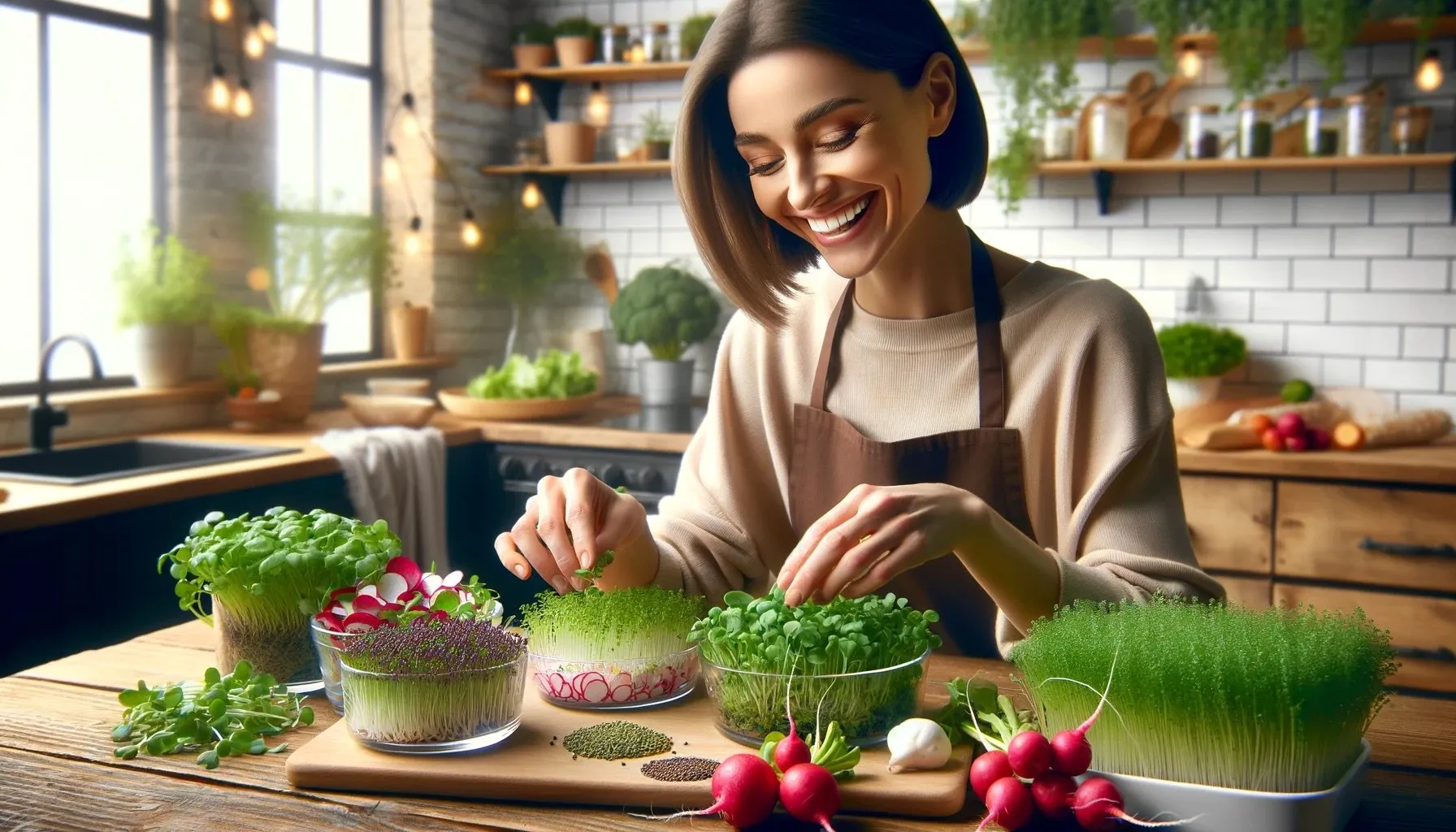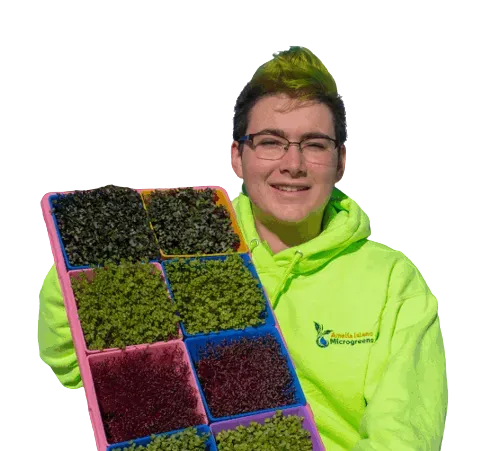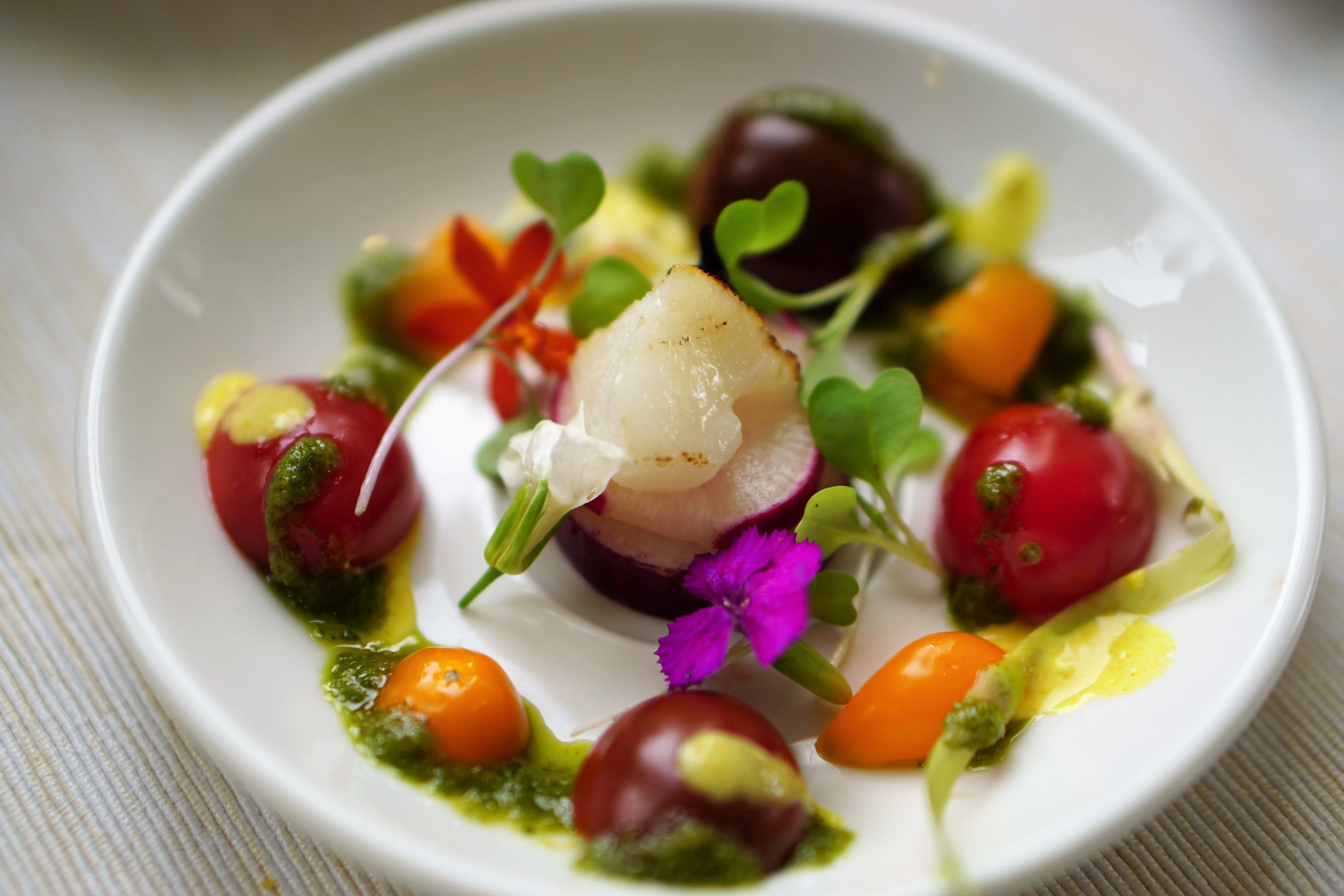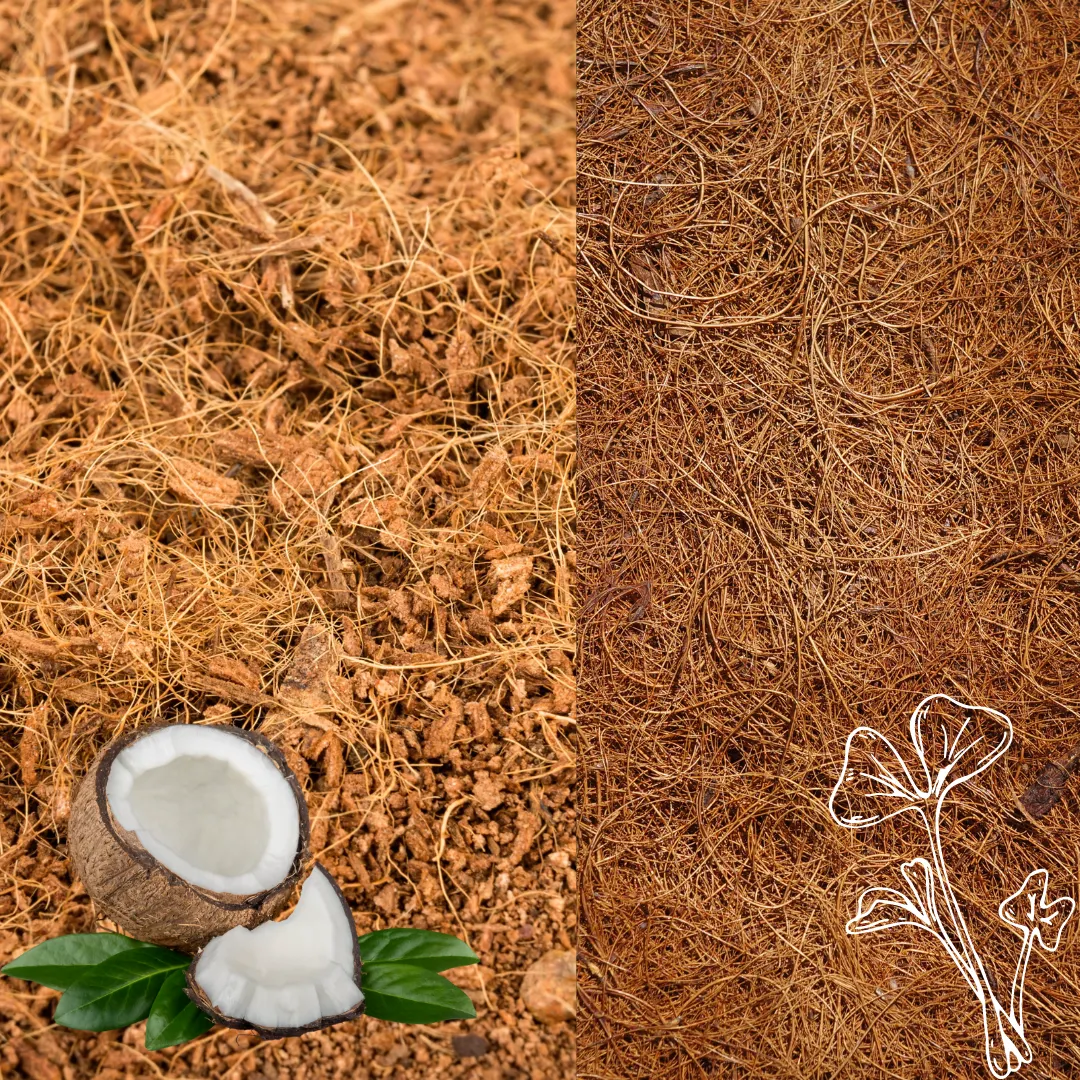Why I Quit my Microgreens buisness (And What I Do Instead)
Are you thinking about starting a microgreen business? I did... until I gave it up.
But it wasn’t because I failed. I succeeded… in the wrong direction. In this blog, I’ll share why I stopped selling microgreens, even when it was profitable, and the one decision that completely changed everything for me.
Hi, I'm Connor Hiebel, founder of Amelia Island Microgreens. We empower people to grow their own health. I started growing microgreens when I was 7 years old.
At 14, I had restaurants, markets, and customers lining up to buy from me.
It worked. But something still felt… off.
I started growing microgreens for my health.
And during COVID, I wanted to help others get clean, fresh food they could trust.
No pesticides. No mystery produce. Just nutrient-dense greens, grown locally.
But one day, my mom asked me something that stopped me in my tracks:
“Does your mission match what you’re doing?”
And it hit me: I was giving people the product, not the power.
I was giving them fish… when I really wanted to teach them to fish.
That was the moment everything changed.
I had two choices:
- Change my mission statement.
- Or start living it.
So I pivoted from selling microgreens… to teaching people to grow their own.
Watch the full story here👇
The New Path: Empowerment Through Kits
I took everything I had learned from years of growing—systems, methods, failures—and created microgreen grow kits.
These kits make it super easy for anyone to grow fresh food at home.
Even people who swear they have a “brown thumb.”
Fun fact: I have a succulent graveyard (watch the video to see)
But I can grow microgreens and so can you.
Microgreens grow in just 7 days.
No bugs. No weeding. No worrying about weather.
Just fresh, nutrient-packed greens on your countertop.
The impact has been incredible:
- Kids who never liked vegetables start eating what they grow.
- Families grow together.
- People come back for seed refills, more kits, and better health.
Yes, I gave up some profit up front.
But I gained something much bigger: purpose.
And long-term, that’s actually more profitable and more meaningful.
We’re also cutting out 98% of the single-use plastics from our kits—thanks to a grant from FedEx.
This is phase 2 of our 3-phase plan to go 100% plastic-free.
Growing microgreens isn’t just a business anymore it’s a movement.
Ready to be a part of the microgreens movement? Get growing today with your microgreens kit!
Wait… Do I Still Sell Microgreens?
You might be wondering:
“Connor, do you still grow and sell microgreens?”
Absolutely. Just not as the main focus.
I still grow for a few restaurants like Cucina South.
I love seeing basil microgreens topping their dishes.
But my main focus? Creating a system that empowers you to grow.
Because not everyone wants to grow.
And some people just need a fresh, reliable supply.
So yes—I serve both. But the heart of the business is teaching.
From Selling to Serving
Here’s that one decision that changed everything:
I stopped selling. I started serving.
That single pivot from profit to purpose completely transformed my business and gave me a mission that fuels me every day.
So, let me ask you:
Have you ever walked away from something profitable to follow your purpose?
Share your story in the comments I’d love to hear it.
And if you're ready to start growing microgreens yourself, go to:
👉 ameliaislandmicrogreens.com/101
for your free Microgreen Masterclass.
I’ll teach you everything I’ve learned from 14 years of growing.
If this video helped you think differently about growing microgreens, hit the like button. It helps more people find this message.
And if you’re serious about starting your own microgreen business or just want to grow for your health click the next video on your screen.
I’ll show you exactly how to start growing microgreens at home.
As always stay awesome.
And remember: You don’t need a green thumb.
Just a microgreen one. 🌱
🌱 Microgreen Business FAQs:
Profitability, Licensing, Sales & More
Thinking about starting a microgreen business? You're not alone. Microgreens are one of the fastest-growing niches in the health and wellness space—both literally and financially. Below, we’ll answer the most common questions about microgreen businesses, licensing, pricing, and profit potential.
💰 Is a microgreen business profitable?
Yes, a microgreen business can be highly profitable—especially at a small scale. Microgreens typically have low overhead, fast turnaround (7–14 days), and high per-pound prices. Some growers make $15–$40 per tray, with startup costs often under $1,000.
Pro Tip: Profitability depends on consistent customers (like chefs or CSA members), efficient growing systems, and minimizing waste.
🌾 What are the pros and cons of a microgreen business?
Pros:
- Low startup cost
- Fast growth cycles
- High market demand
- Easy to grow indoors
- Eco-friendly and scalable
Cons:
- Perishable product
- Market saturation in some areas
- Requires regular cleaning and food-safe practices
- Local regulations can vary
📉 What is a possible downside to microgreens?
Microgreens are perishable and time-sensitive, meaning if you don't sell them within a few days of harvest, they may go to waste. Additionally, market saturation in urban areas can make it harder to stand out without a unique value proposition (like educational kits or community engagement).
📋 Do I need a license to grow microgreens?
In most areas, you do not need a license just to grow microgreens at home. However, if you’re selling to the public, especially restaurants or farmers markets, you may need:
- A business license
- A food handler’s permit
- A cottage food license (in some states)
- An inspection by your local health department
Always check with your local agriculture extension office or state health department to stay compliant.
🌱 Which microgreens are the most profitable?
The most profitable microgreens include:
- Sunflower – High yield, popular flavor
- Pea shoots – Easy to grow, sweet taste
- Radish – Fast-growing, spicy kick
- Broccoli – High in sulforaphane, marketed for health benefits
- Basil microgreens – Higher value per ounce, perfect for chefs
Basil can sell for $40+ per pound but takes 2–3 weeks, while radish can be ready in just 7 days.
💸 How much does one tray of microgreens sell for?
One 10x20 tray of microgreens can sell for:
- $15–$30 retail
- $20–$40 wholesale to restaurants (depending on variety and region)
Trays yield about 8–12 ounces on average. Specialty varieties or organic practices may increase prices.
🛍️ Who can I sell microgreens to?
You can sell microgreens to:
- Restaurants and chefs
- Farmers markets
- Grocery stores or co-ops
- Online (through your own website or local delivery apps)
- Health-conscious consumers directly
- Subscription or CSA boxes
- Schools or community centers
📦 How do you package microgreens to sell?
Most growers use:
- Clamshell containers (compostable or plastic)
- Vacuum-sealed bags (for larger wholesale orders)
- Recycled kraft boxes for eco-friendly branding
Label your packaging with:
- Product name
- Date harvested
- Your business info
- Storage instructions
🌿 What is the market demand for microgreens?
The market for microgreens has grown consistently since 2019, driven by:
- Interest in plant-based diets
- Functional nutrition
- Local and sustainable food trends
In the U.S. alone, the microgreens market is projected to reach $2 billion+ by 2028.
🛠️ Is it hard to grow your own microgreens?
Not at all. Microgreens are one of the easiest crops to start with. Most varieties need:
- A shallow tray
- Soil or growing medium
- Seeds
- Light (sunlight or LED grow lights)
- Watering once a day
Harvest is typically in 7–14 days, depending on the variety.
🚀 How do I start a microgreen business?
Here’s a simple roadmap to get started:
- Choose 2–3 microgreens to start with (radish, sunflower, pea)
- Buy basic equipment (trays, seeds, lights, shelves)
- Start growing at home
- Build a brand with a name, logo, and story
- Sell locally to test pricing and packaging
- Network with restaurants or health markets
- Get legal: business license, insurance, and health safety practices
- Scale up: more trays, delivery routes, or educational products
🧠 Are microgreens considered produce?
Yes, microgreens are legally considered fresh produce and fall under the same food safety regulations as leafy greens. This means handling and storage must follow safe food practices especially if sold commercially.
🥦 Are microgreens a good side hustle?
Absolutely. Many people start microgreen businesses part-time from their homes. It’s a great side hustle because:
- You can start with under $500
- It's low-maintenance
- It fits in a garage, spare room, or basement
- High margins with recurring weekly customers
🔄 Do microgreens keep producing?
No, most microgreens are single-harvest. You cut them once, compost the roots, and replant the tray. The cycle is fast—just 7–10 days for many varieties—so you can harvest weekly.
🧾 How much do microgreens yield per tray?
- Yield depends on variety, tray size and method, but for a standard microgreen tray:
- Sunflower: 10–12 oz
- Pea shoots: 8–10 oz
- Radish: 6–8 oz
- Broccoli: 2–4 oz
📏 Standard Microgreen Tray Size:
- Dimensions: 10 inches x 20 inches (1020 tray)
- Depth: Usually 1.25"–2.5" deep
❓ Why are microgreens expensive?
Microgreens are expensive due to:
- High nutrient density
- Fast perishability
- Labor-intensive harvesting
- Sustainable packaging
- Premium demand from chefs and health buyers
🧑🍳 What are the best microgreens to sell to restaurants?
Top picks include:
- Wasabi (spice and dimension)
- Radish (spice and color)
- Cilantro (sought-after by Latin and Asian cuisines)
- Mustard (zesty flavor)
- Amaranth (bright red color for plating)
Tip: when talking to a chef, share your core 2-3+ varieties you offer and then ask chefs if they'd like a special order of another microgreen variety. If they special order a variety, then you can add an upcharge.
Starting a microgreen business is one of the most rewarding and accessible ways to get into agriculture, health, or sustainability. Whether you're selling to chefs, teaching kids, or just growing for your own health, microgreens offer a low-risk, high-impact opportunity.
Ready to start growing?
🎁 Grab your Free Microgreen Masterclass here:
👉 ameliaislandmicrogreens.com/101
Have more questions about microgreens? Drop them in the comments below we’re here to help you grow! 🌱

